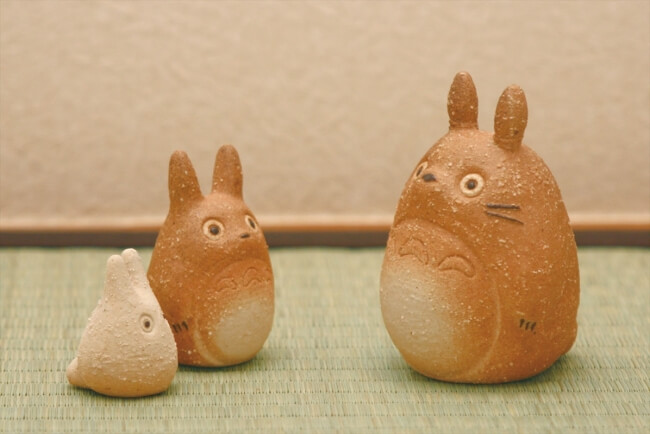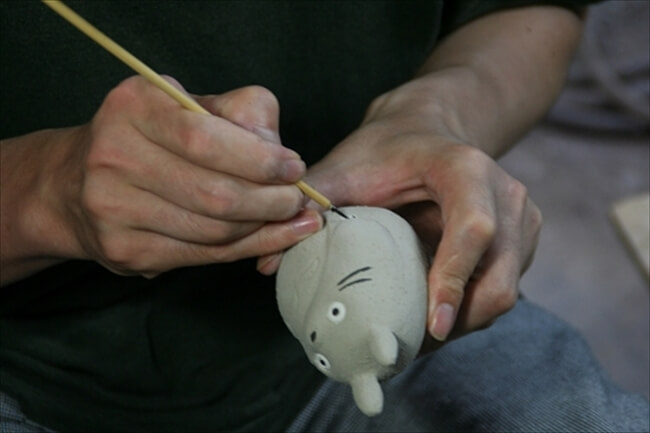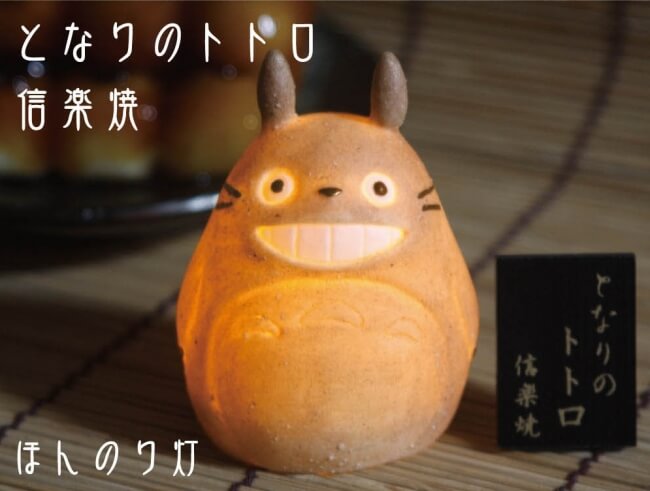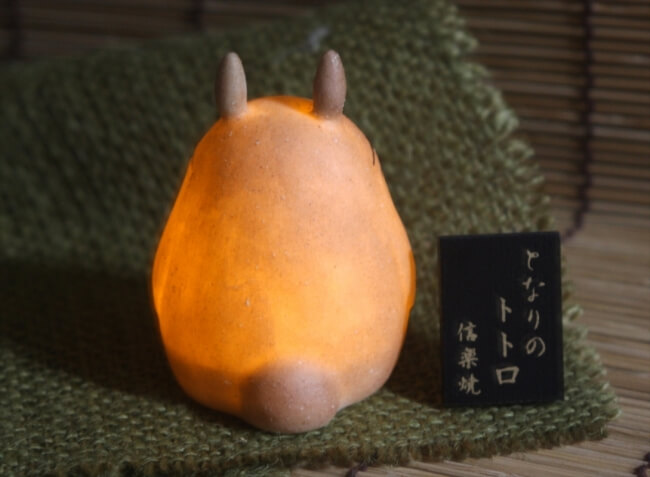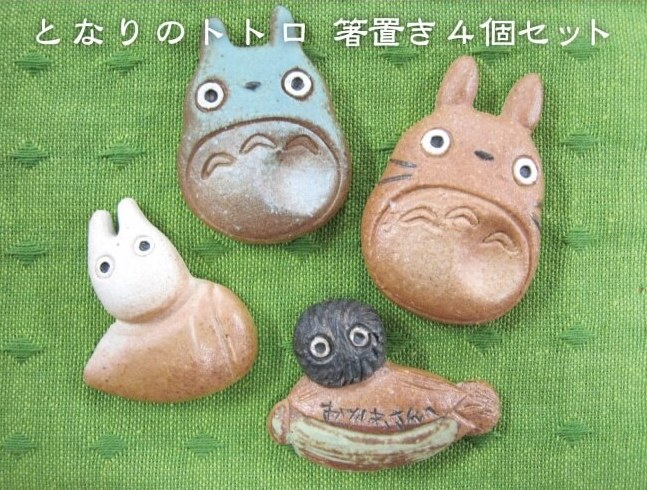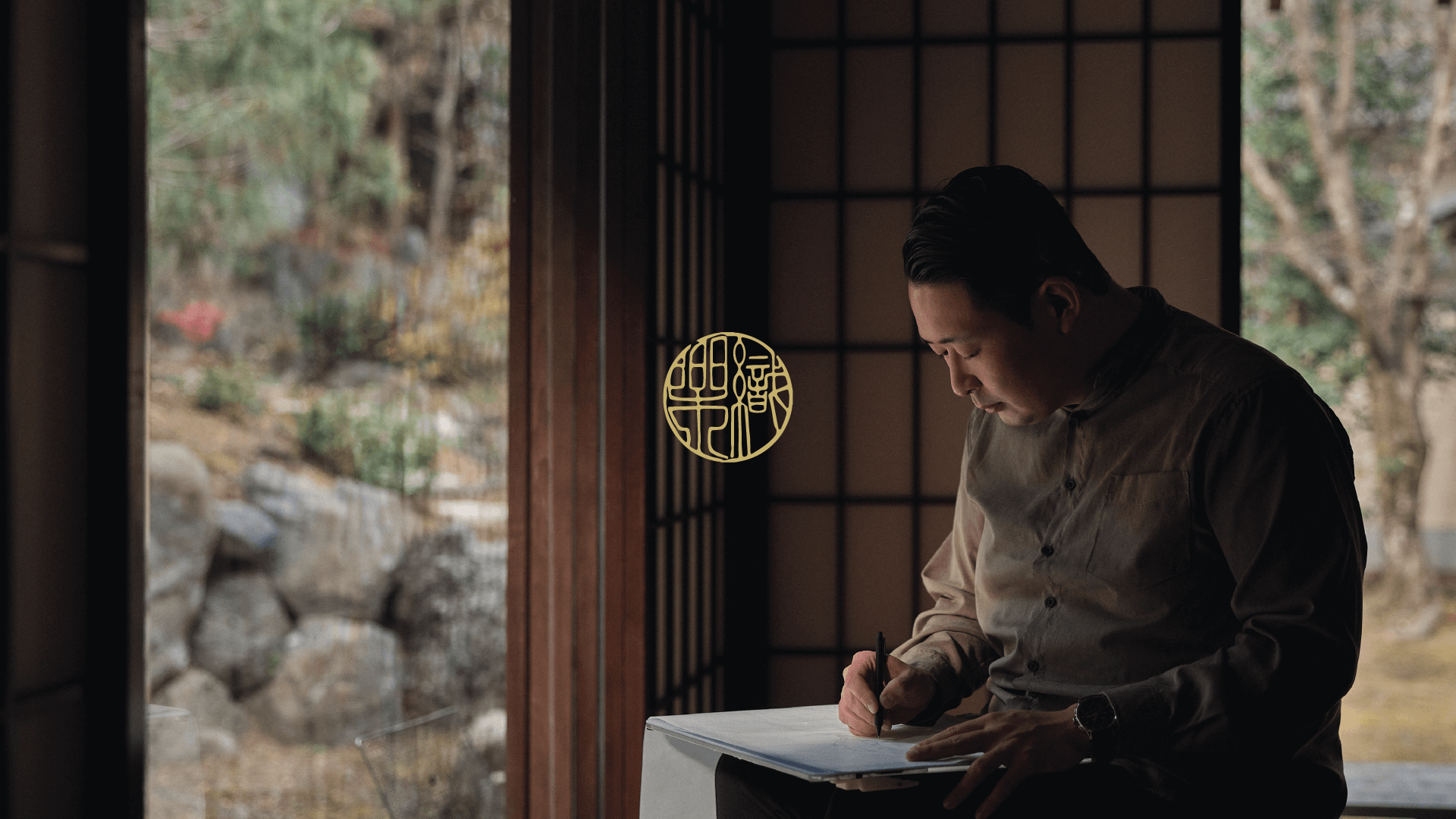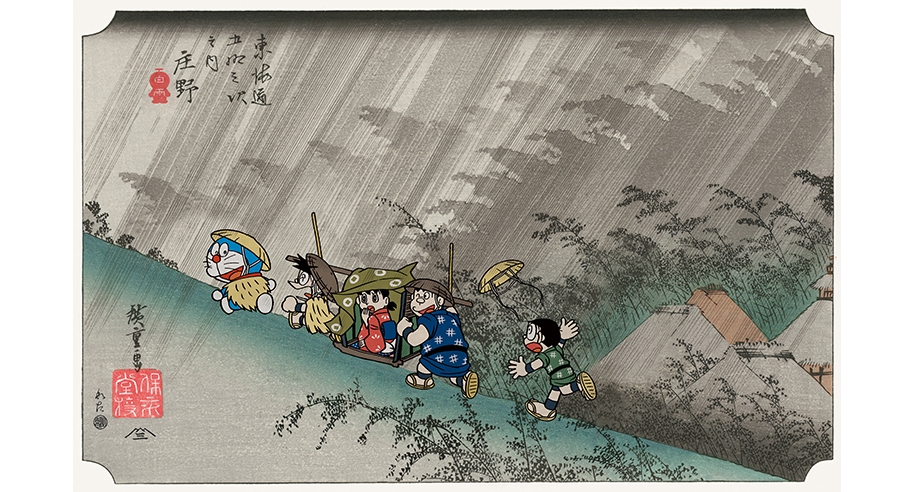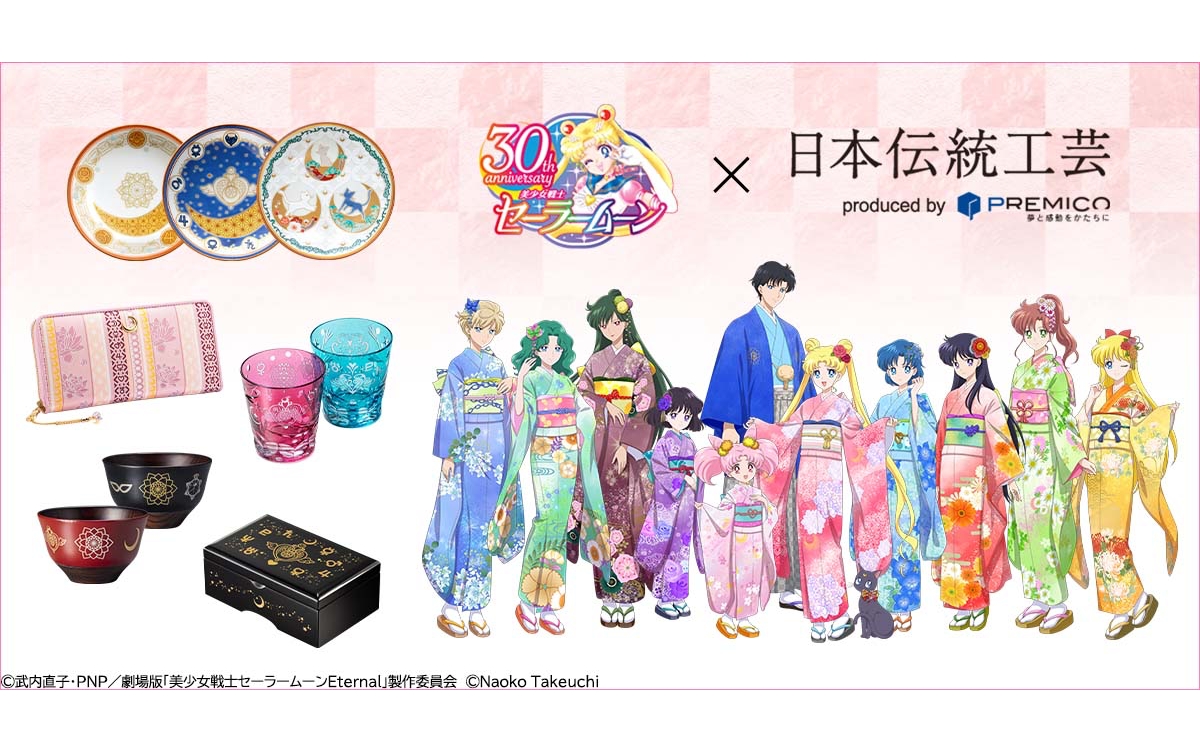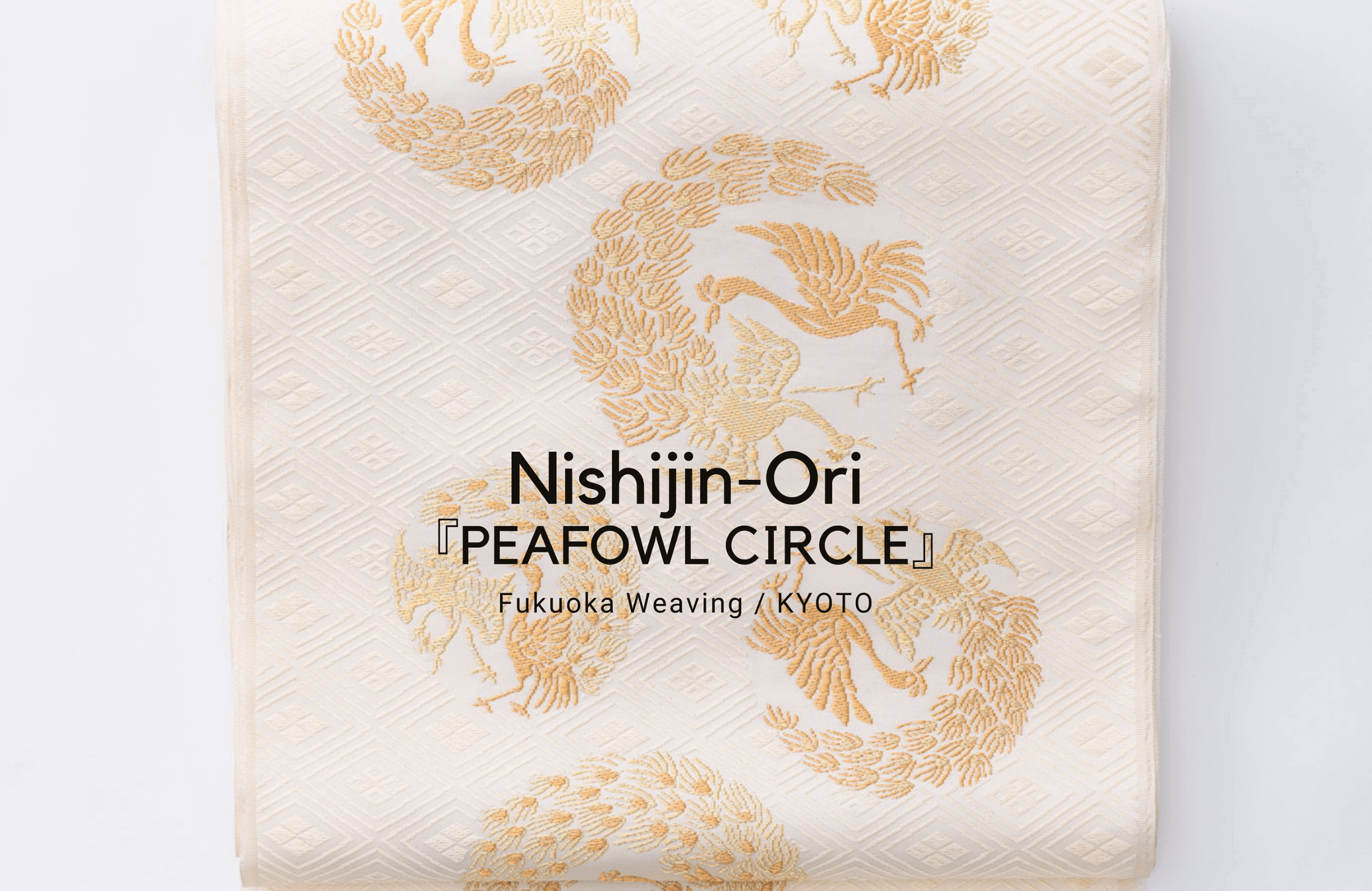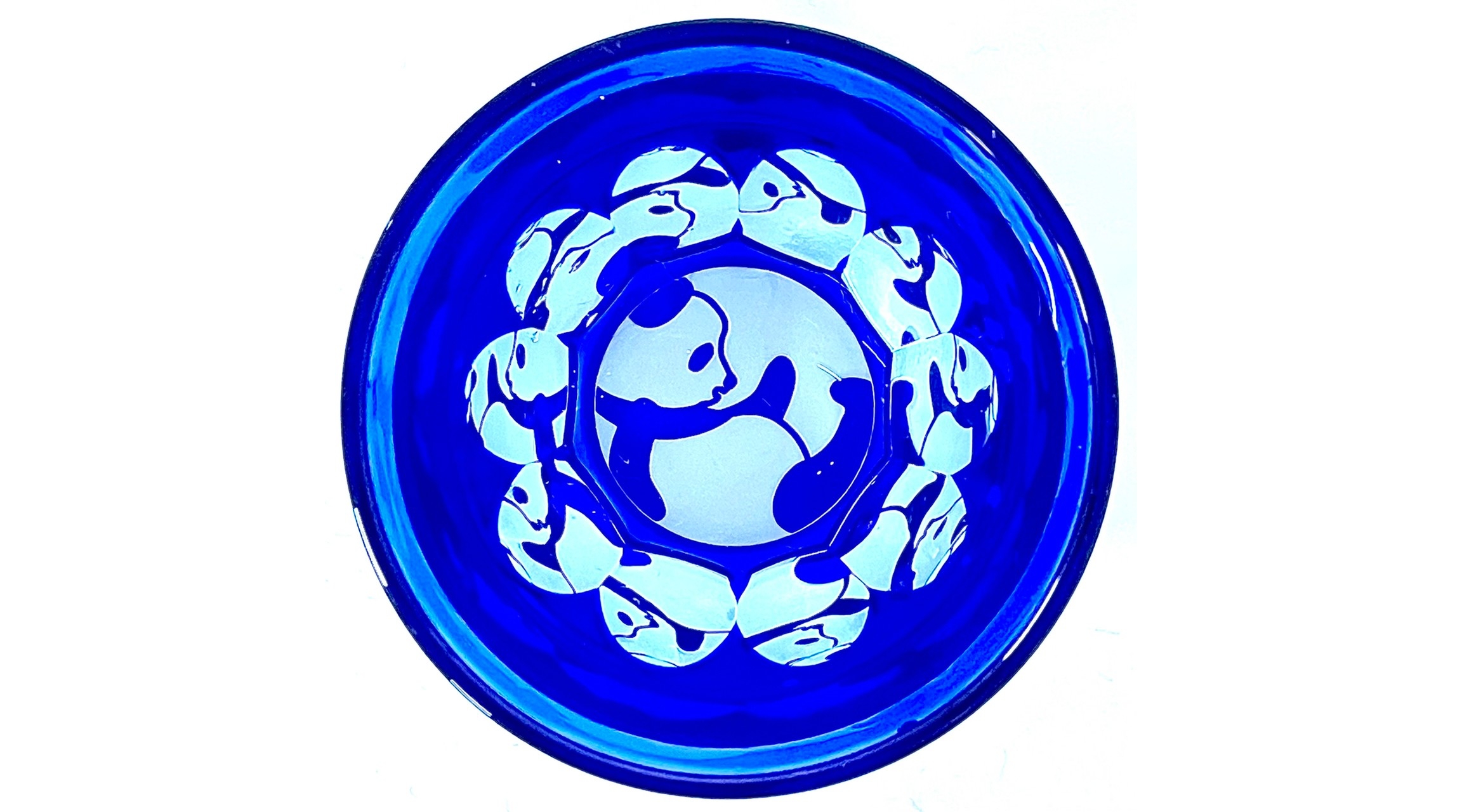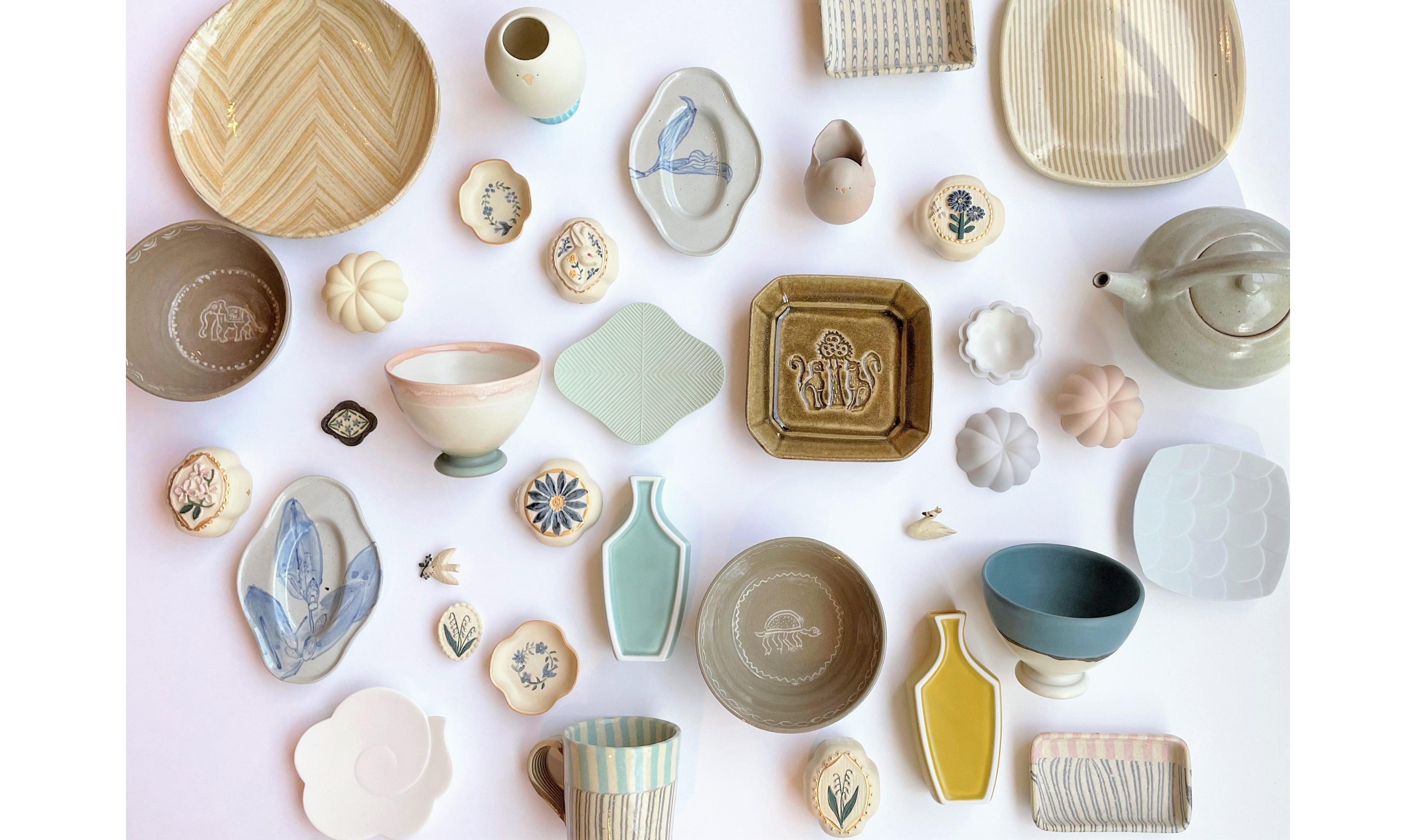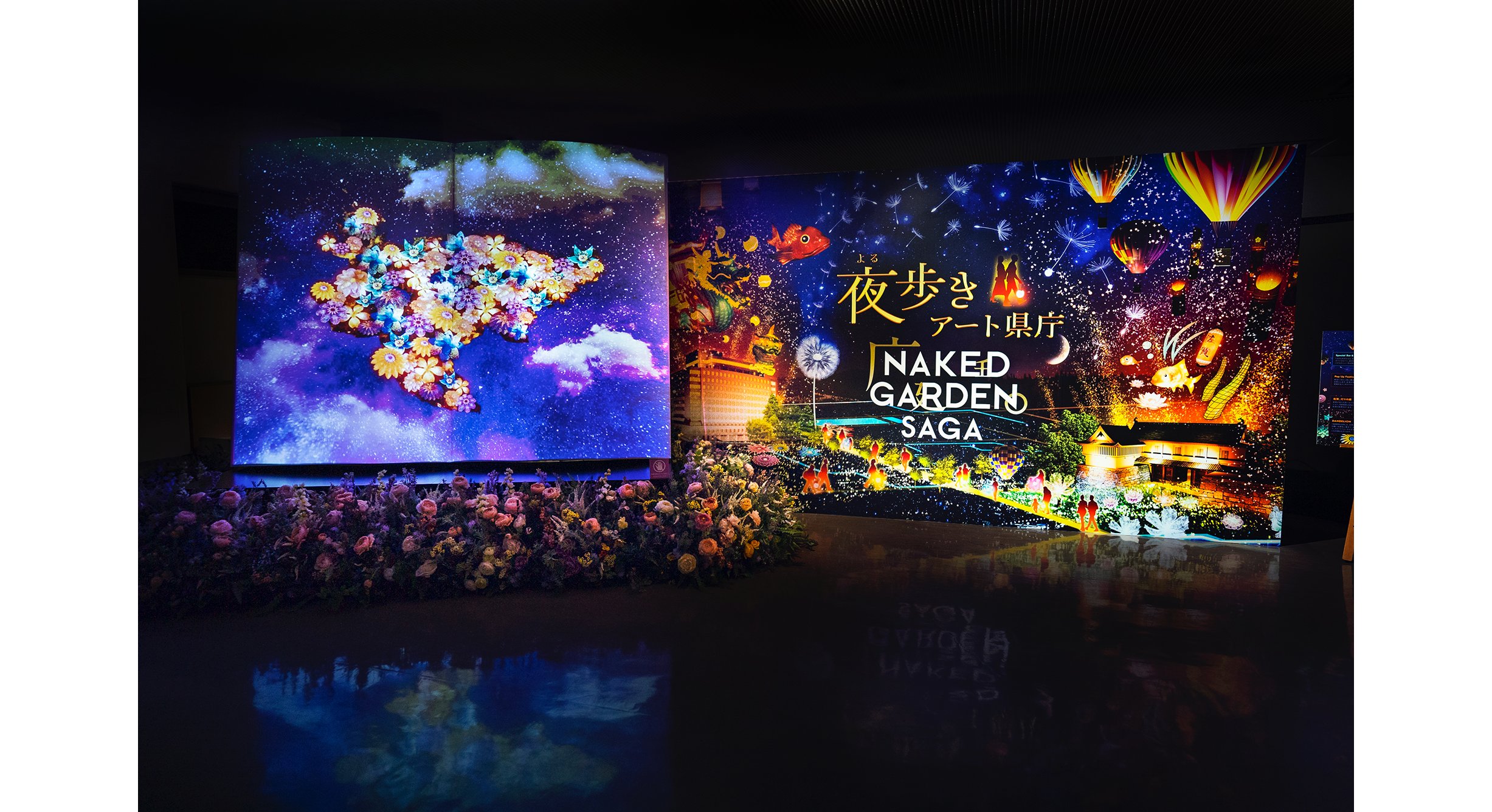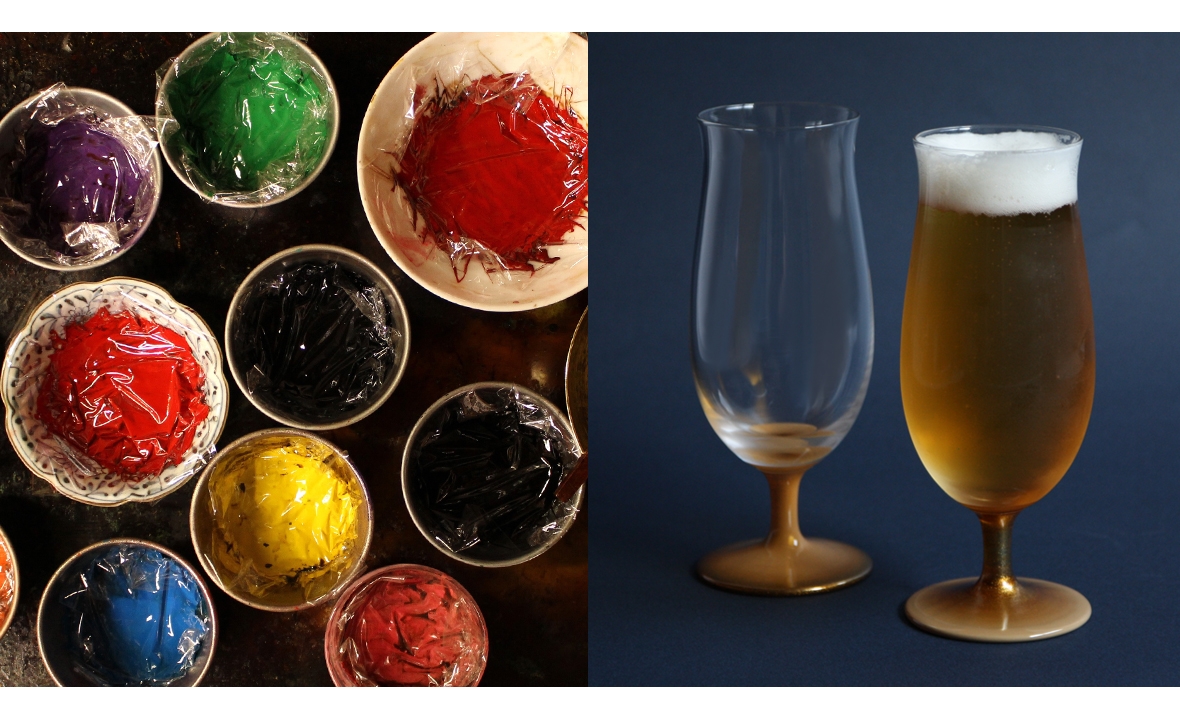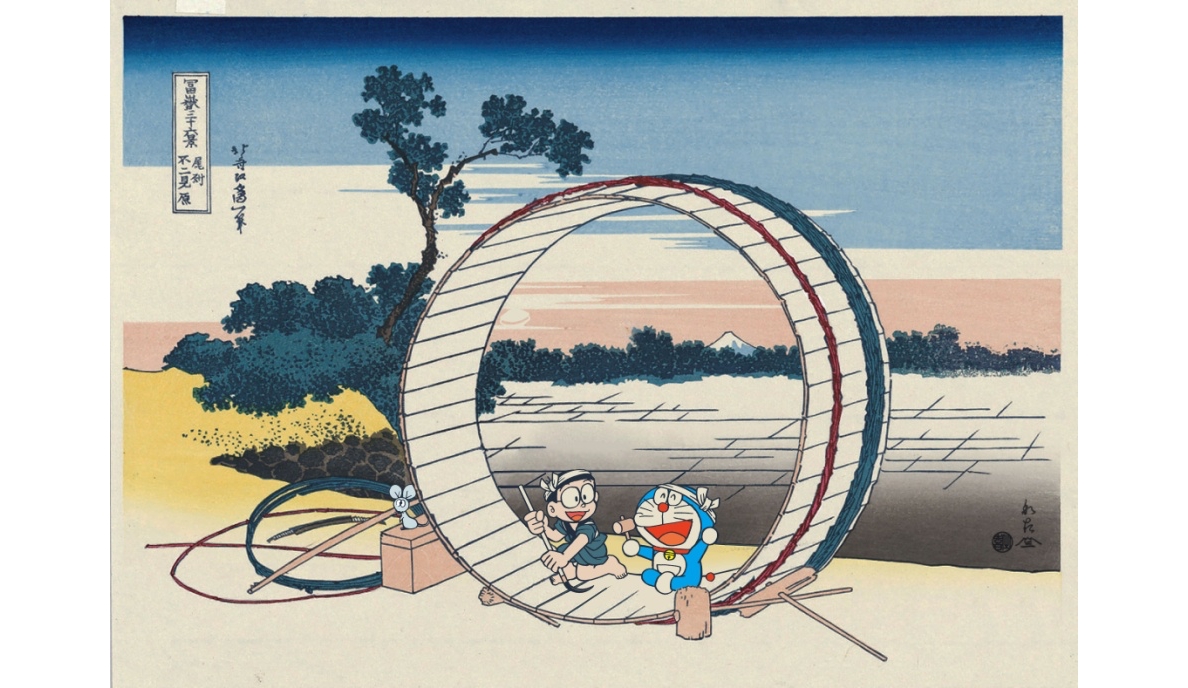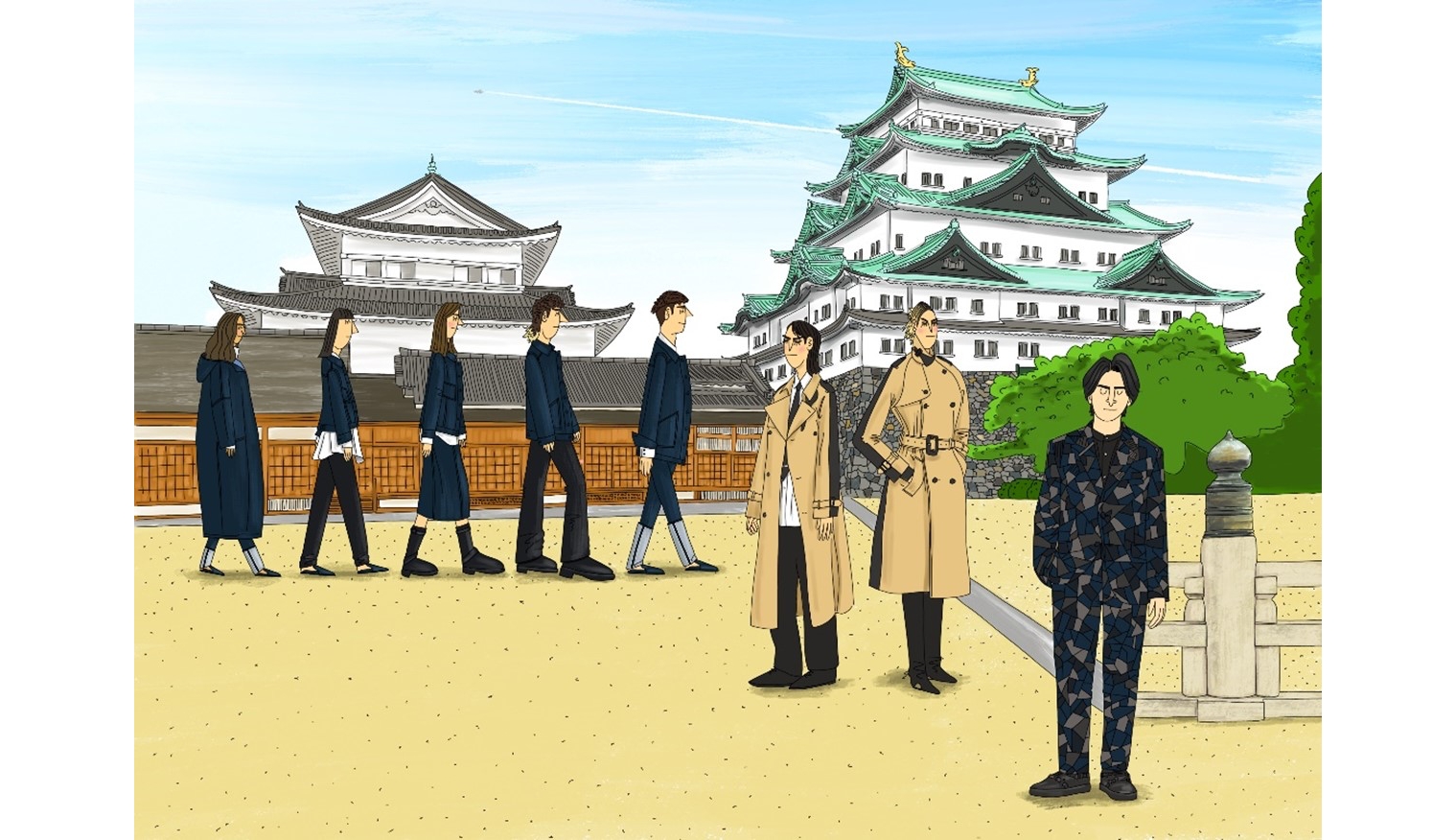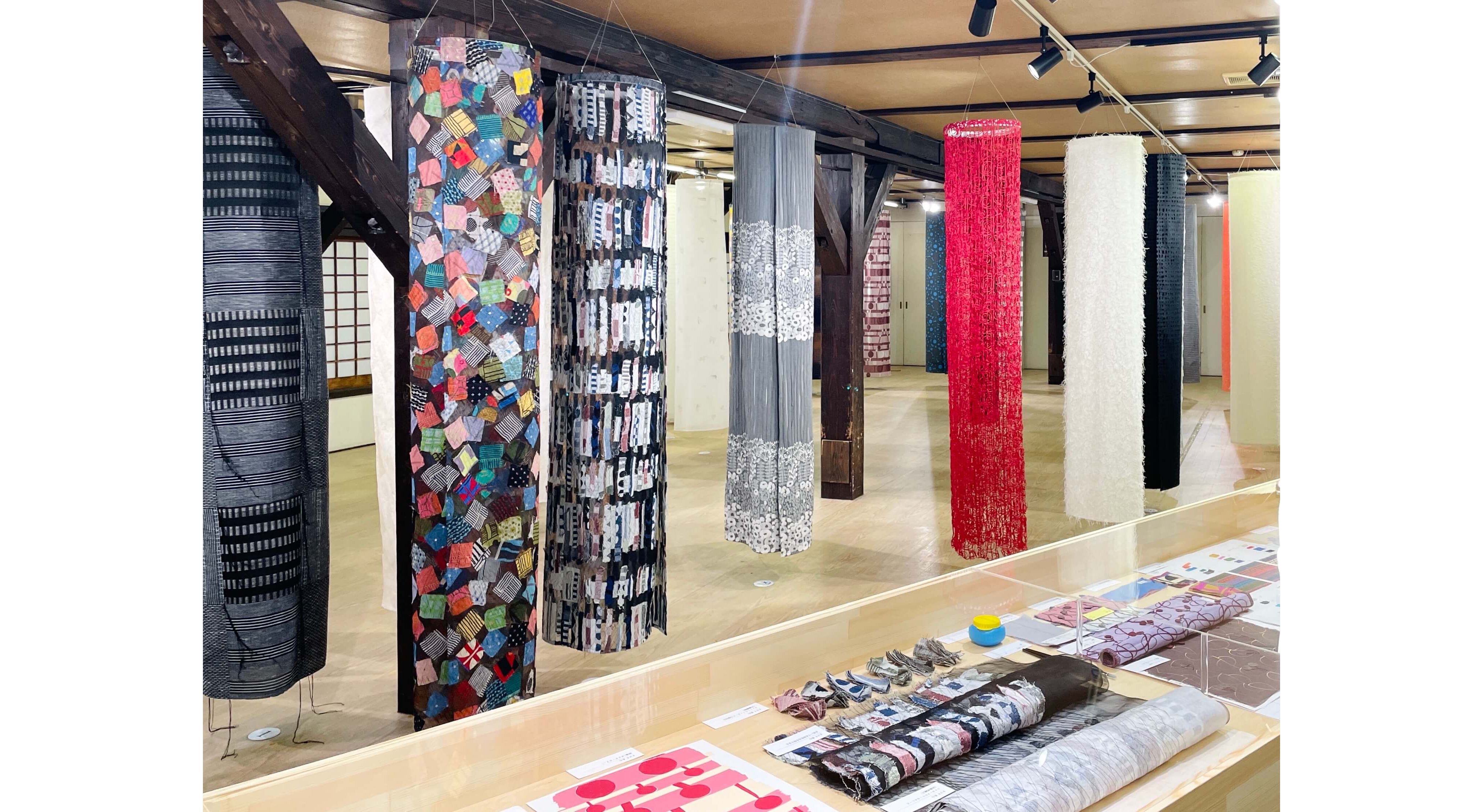My Neighbor Totoro Collaborates with Traditional Japanese Shigaraki Potteryware
26.July.2018 | ANIME&GAME
Shigaraki ware is a traditional type of pottery and stoneware made in the town of Shigaraki in Shiga Prefecture. Village Vanguard is now selling a range of Shigaraki ware in collaboration with the Studio Ghibli movie My Neighbor Totoro including ornaments, chopstick rest, cups and more.
Shigaraki is one of Japan’s Six Ancient Kilns and has a distinct warm colour made by the kiln it’s fired in.
The Totoro set features Totoro himself as well as Blue Totoro and White Totoro. Each ornament is handcrafted expertly and incorporates the distinct craft of Shigaraki. Check out Totoro’s huge smile!
There’s also a Totoro LED light that sways with warm light like a candle. It can be used as a mini light for your desk.
There’s also 4 different chopstick rests―the three Totoros and Soot Sprites―as well as white and green cups.
Get your hands on these items from this collaboration between My Neighbor Totori and a traditional Japanese craft.
Totoro Shigaraki Series
Shigaraki Set of 3
https://vvstore.jp/i/vv_000000000166280/?utm_source=press
Shigaraki Candle
https://vvstore.jp/i/vv_000000000166281/?utm_source=press
Shigaraki Cup (White)
https://vvstore.jp/i/vv_000000000166283/?utm_source=press
Shigaraki Cup (Green)
https://vvstore.jp/i/vv_000000000166284/?utm_source=press
Shigaraki Chopstick Rest Set of 4
https://vvstore.jp/i/vv_000000000166286/?utm_source=press
RELATED ENTRIES
-
monopo Collaborates with Kyoto-Based Brand Shokuraku Asano to Share Traditional Japanese Textiles with the World
21.November.2022 | FASHION
Global creative agency monopo is teaming up with Shokuraku Asano, a 100-year-old obi maker from Kyoto! The company is working to create a digital experience for interested viewers, sharing each artisan’s personal story. Those who love Japanese culture are welcome to enjoy traditional Japanese crafts in an entirely new way!
Using a one-of-a-kind QR obi, a new storytelling method is showing off the hard work and love that goes into the company’s textiles. A special website and video allow interested viewers to experience the process of making an obi digitally, simply by using their smartphone. Even those unable to visit Japan to see these obi in person can dive into the history of the area’s textiles and become more acquainted with one part of Kyoto’s manufacturing culture.
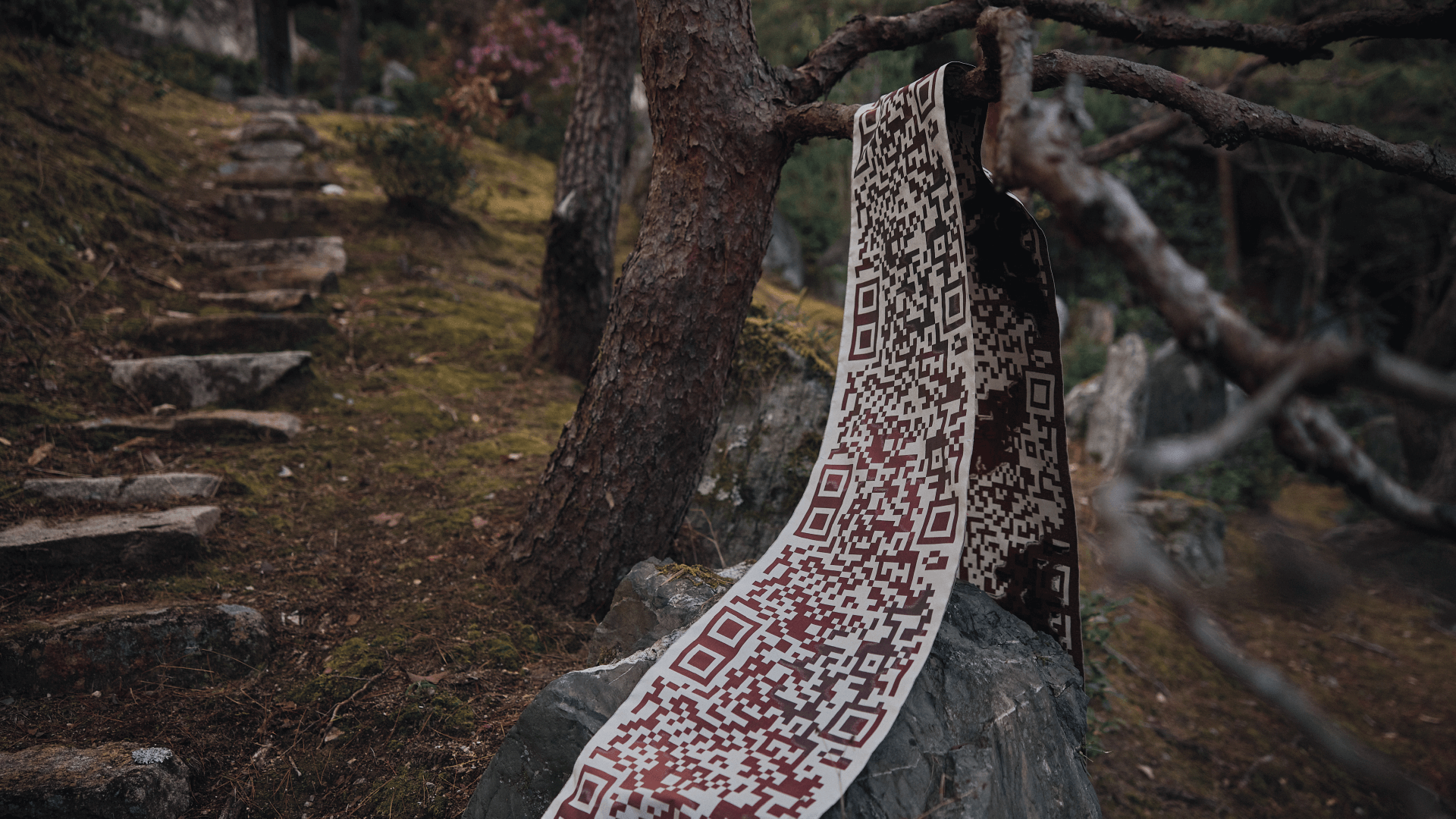
Kyoto was the ancient capital of Japan. The city is known for its history and preservation of Japanese culture, and prior to the pandemic, the city was constantly filled with visitors from around the world anxious to learn more about the country’s traditional culture. When the pandemic hit the world in 2020, it changed the city forever–tourists disappeared and the city became much quieter. Now that Japan has opened its borders, however, tourists are returning in droves.
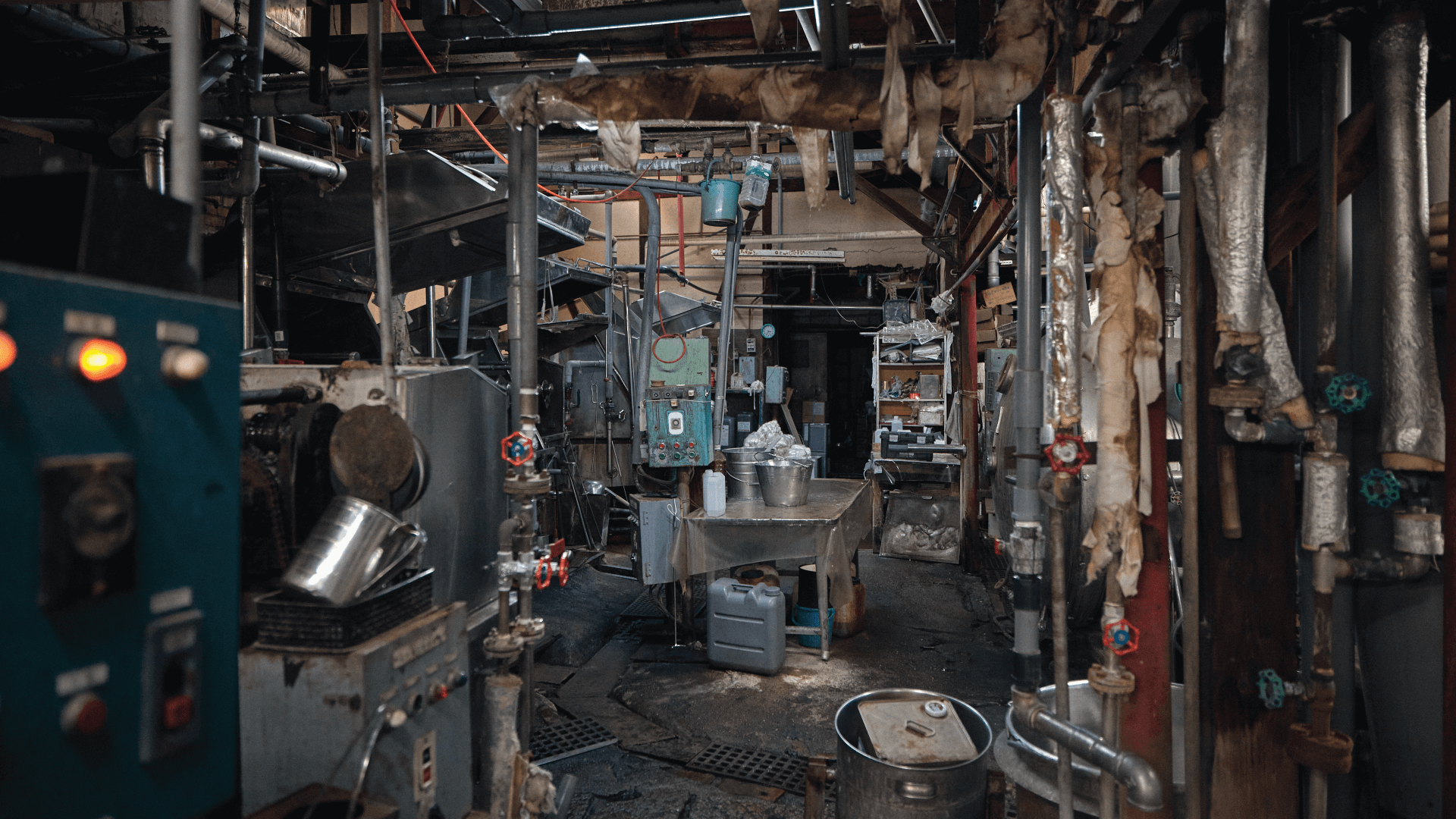
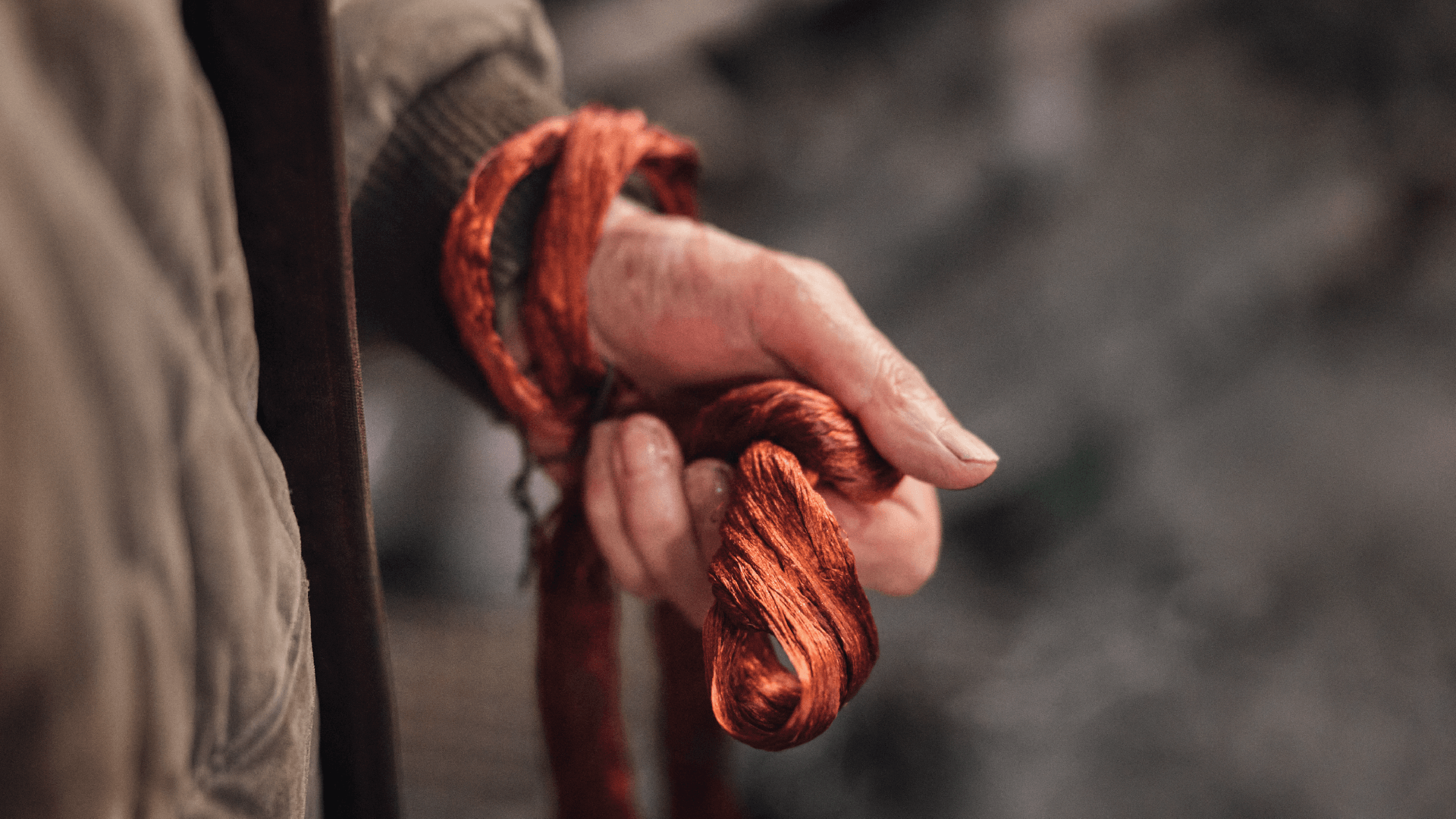
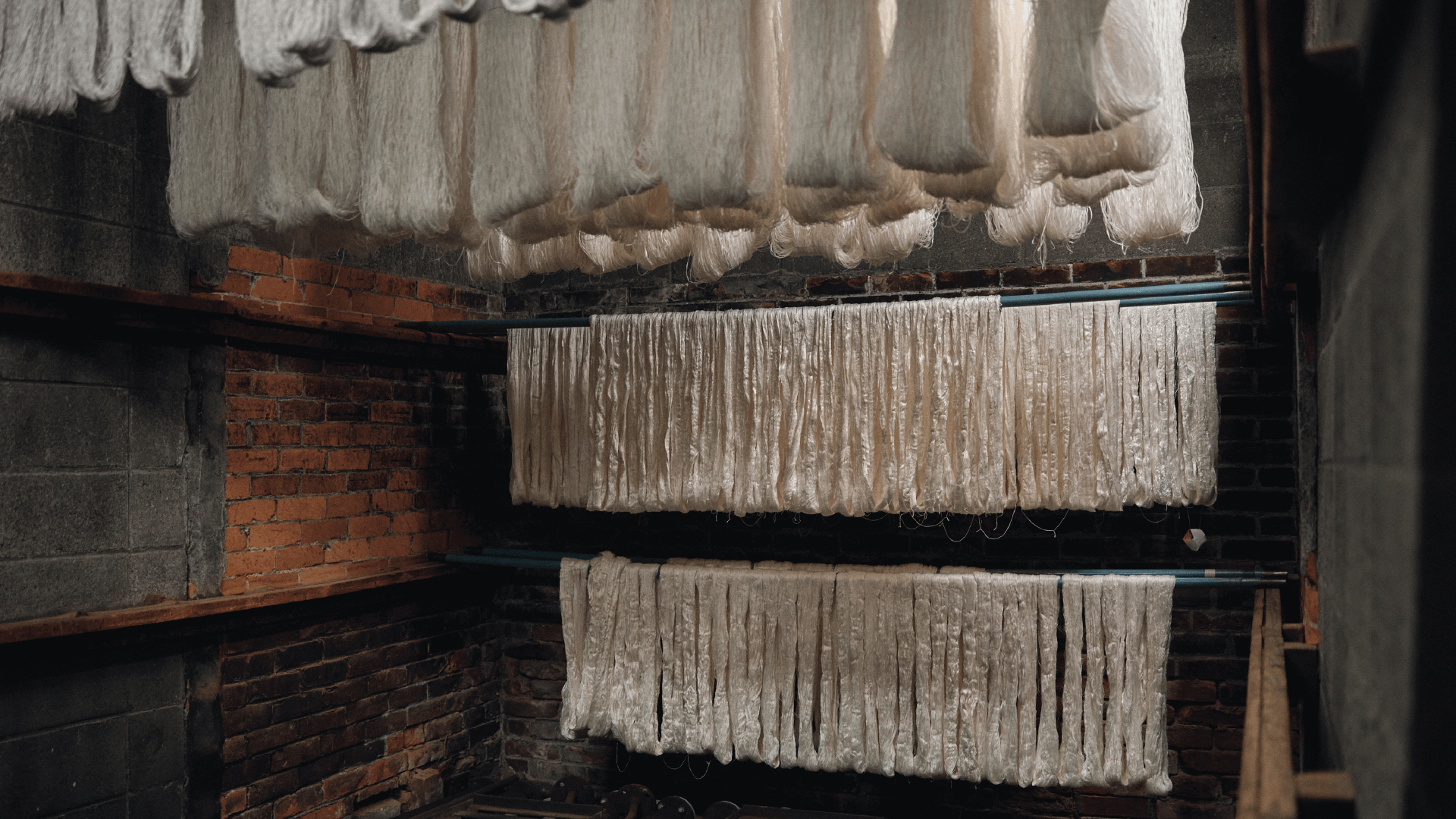
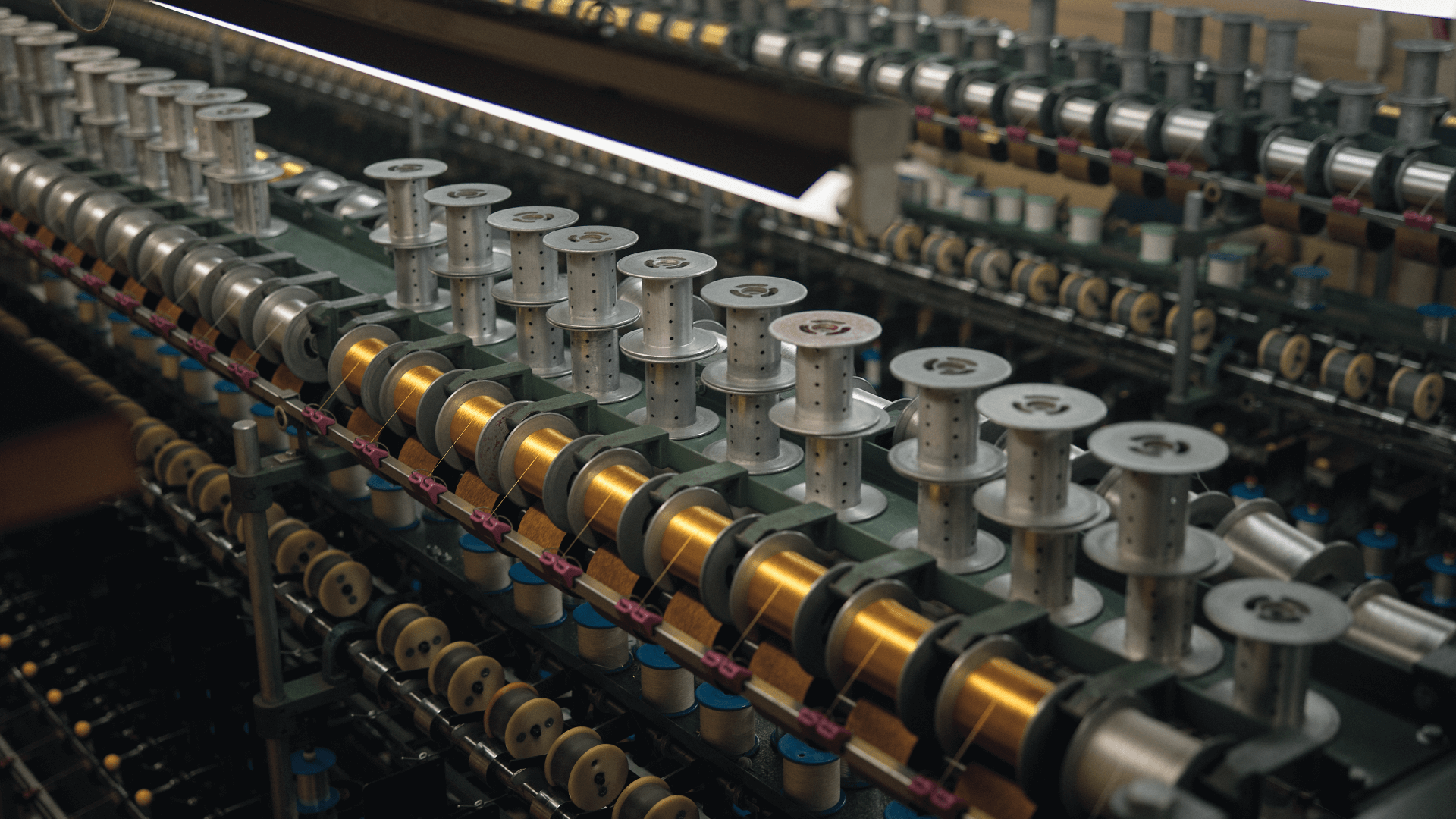
While Shokuraku Asano upholds tradition, it also seeks to leave a mark on new generations by embracing new technology. This unique project is worth noting, so get your smartphone out and start learning!
We applaud monopo’s attempt to share this incredible traditional Japanese craftsmanship with people around the world.
Information
monopo × Shokuraku Asano
Official Site: https://obiproject.monopo.net/
Video Link: https://vimeo.com/724915502 -
Doraemon Ukiyo-e Series Reimagines Popular Characters in Classic Hiroshige Work
28.October.2022 | ANIME&GAME / FASHION
A Doraemon version of Hiroshige’s 1833 ukiyo-e painting Fifty-Three Stations of the Tokaido Hoeido Edition (Rainstorm) will be available to order on October 29!
This work is said to be one of the most famous paintings by the artist, who was considered the last great master of ukiyo-e.
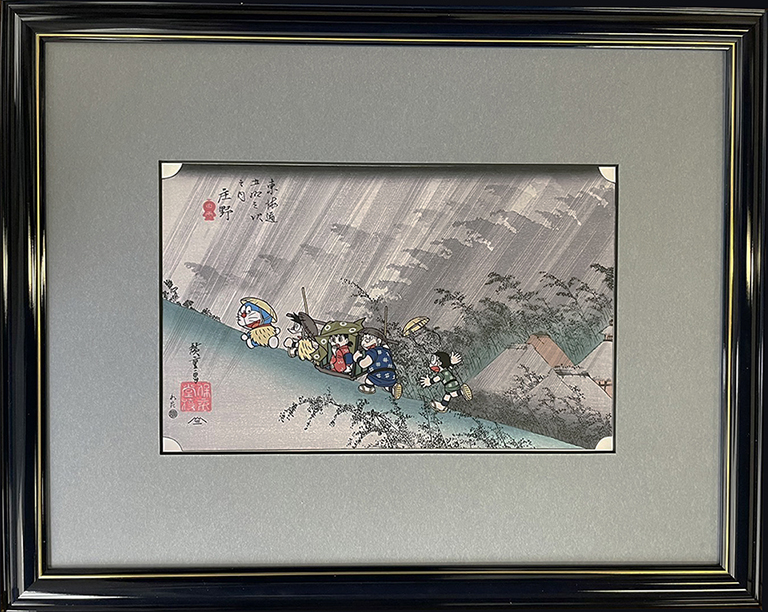
The painter was best known for his depiction of rainscapes, and many of his paintings pushed the envelope of traditional art.
This painting shows Ise Province, what is now present-day Mie Prefecture.
Doraemon and his friends have been expertly placed into the famous piece of art, desperately climbing a steep hill during a sudden evening shower.
For Doraemon and Nobita, the rain is a chance to have fun. Looking at the piece, viewers can see an image of hope in tough times and can remember that with friends, anything is possible and any difficulties can be overcome.
The piece is made from high-quality materials, and you won’t want to miss ordering one of these rare works of art!
Information
Doraemon Ukiyo-e / Fifty-Three Stations of the Tokaido Hoeido Edition (Rainstorm)
Orders Open: October 29, 2022 at 12:00
Price: ¥45,000 (Excluding tax and shipping charges)
Number Available: 300
Echizen-Manufactured Washi Paper Provided by Iwano Ichibei
Online Shop: http://ukiyoework.com/ -
Attack on Titan Playing Cards Win Big at the Ani-Monozukuri Awards 2022
02.October.2022 | ANIME&GAME
At the 5th annual Kyoto Ani-Monozukuri Awards 2022, a collection of Attack on Titan playing cards made in traditional Japanese style took the Gold Prize in the Craft Design category. In Japanese, monozukuri means ‘to make something by hand.’
The Kyoto Ani-Monozukuri Awards aims to revitalize business between the anime industry and local companies and organizations. It honors outstanding collaborative products, inviting those with a creative streak to try their luck at designing something uniquely anime-inspired. This year’s awards show saw 157 total entries, with one winning the grand prize, seven winning both gold and silver, and six winning bronze.
Charaditional Toys was launched this year, and the company aims to create items for adults who love anime characters. The Gold Award was granted to the company after judges were inspired by the traditional Japanese craftsmanship and high quality shown in the final product. Made by Oishi Tengudo, a company founded in Kyoto in 1800, the cards were made using classic methods. These 48 original playing cards are like nothing fans of Attack on Titan have seen before.
A second project is scheduled for release in winter 2022, so stay tuned!
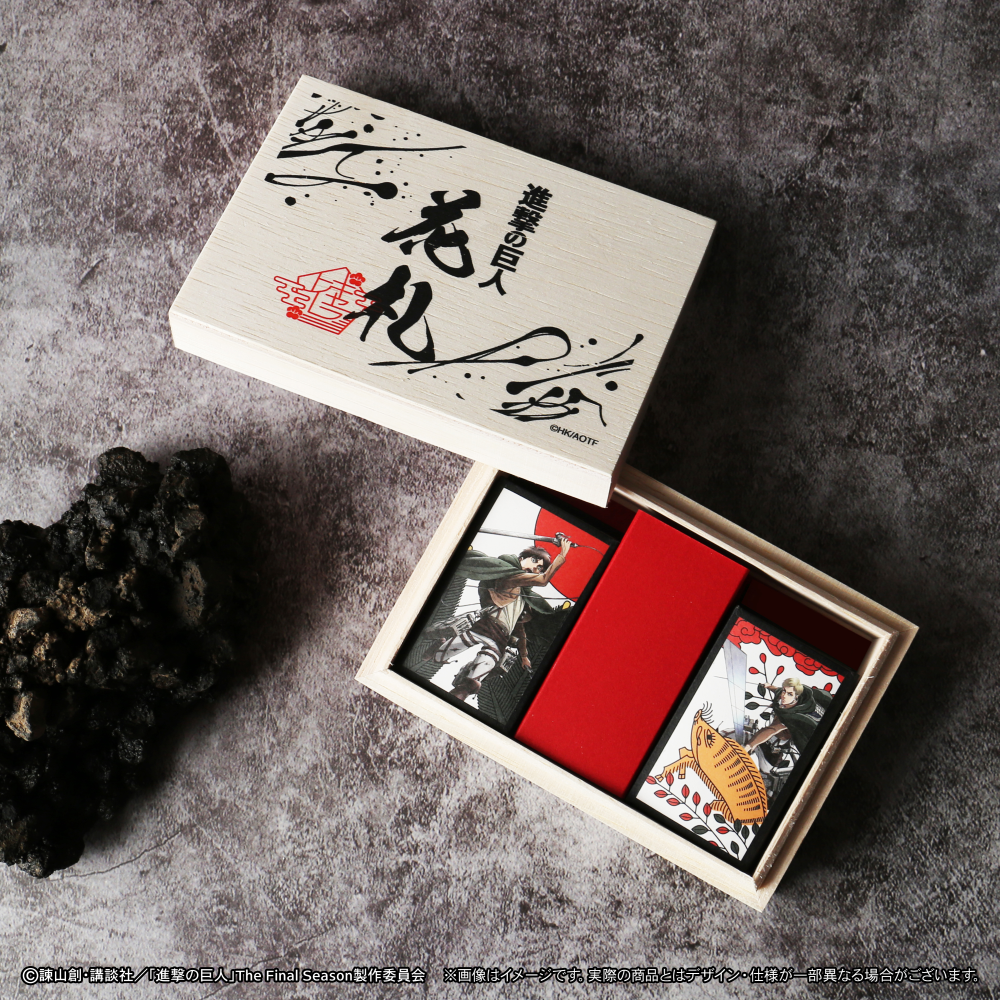
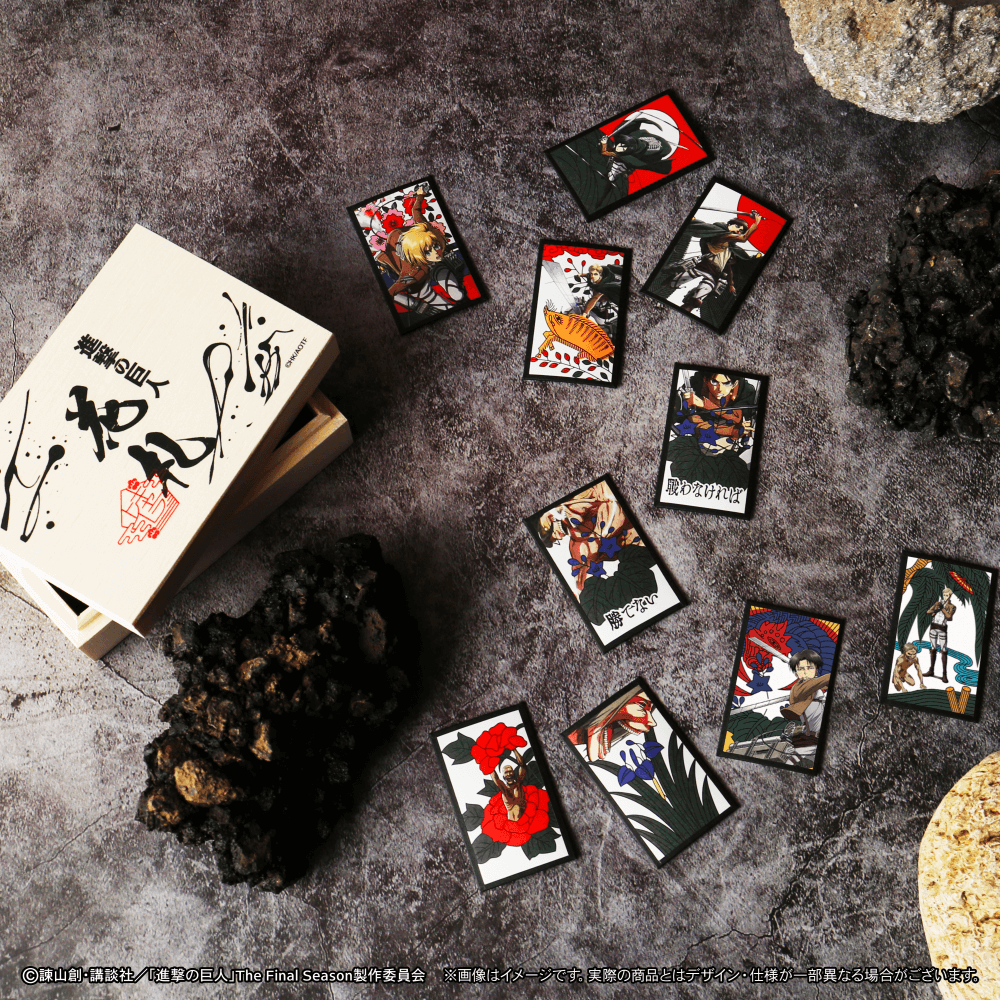
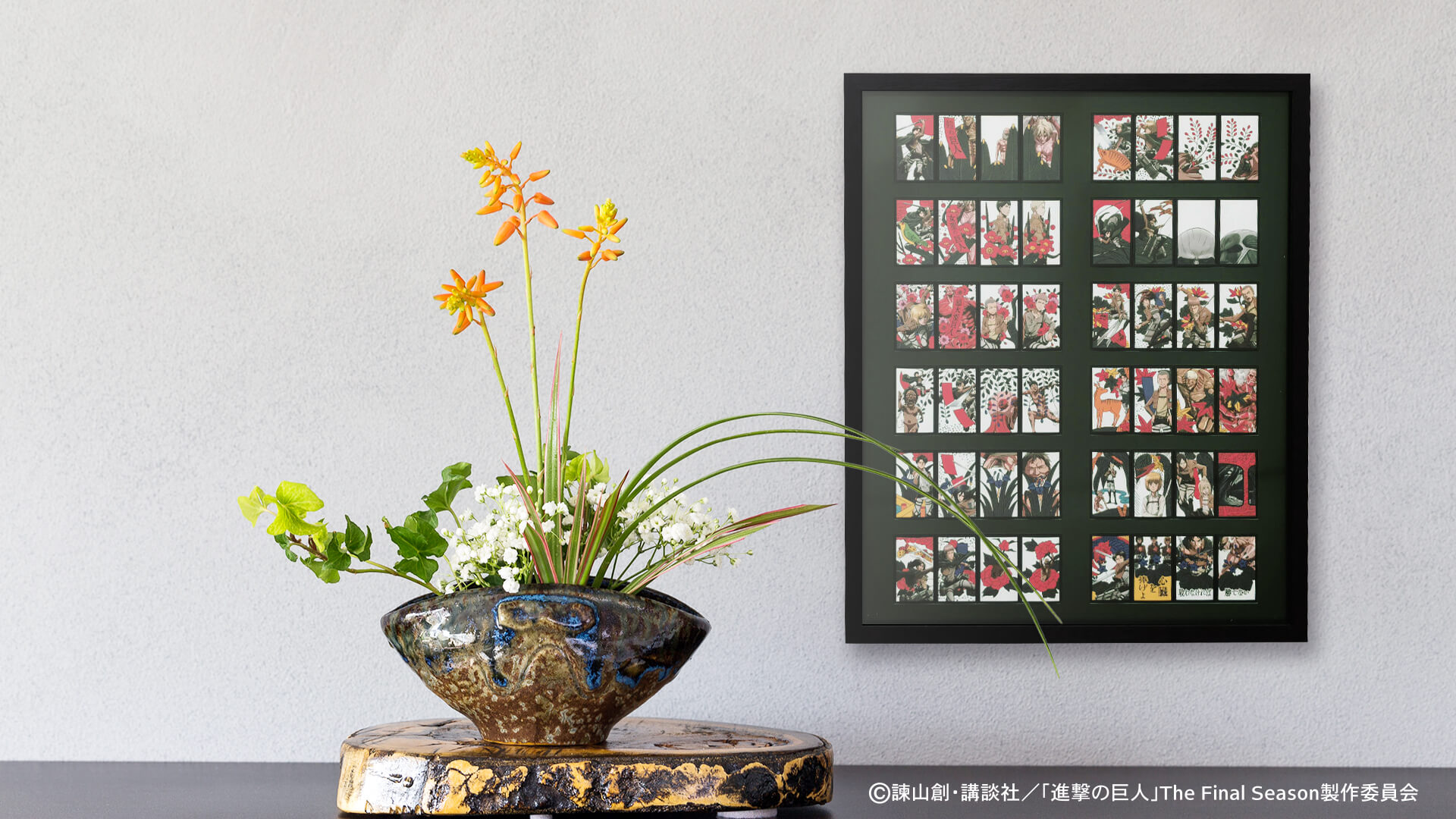
©諫山創・講談社/「進撃の巨人」The Final Season製作委員会
Information
Attack on Titan x Original Playing Cards
Price: Wooden Box Version ¥3,800 / Framed Version ¥18,000 (Both Excluding tax)
Details/Purchase: https://charaditional-toy.myshopify.com
-
Sailor Moon Collaborates with Crafts from Around Japan to Celebrate 30th Anniversary
14.September.2022 | ANIME&GAME / FASHION
PREMICO is known for creating collaborations between popular anime characters and traditional Japanese crafts. Now, to celebrate the 30th anniversary of Sailor Moon, some special items are available from around Japan at the PREMICO online store.
Special anniversary items created by master craftsmen around Japan are now available to order, all inspired by the theatrical release Sailor Moon Eternal. These five items come from Fukushima Prefecture, Ishikawa Prefecture, Tokyo, Kagawa Prefecture, and Fukuoka Prefecture, and you can see details of each below!
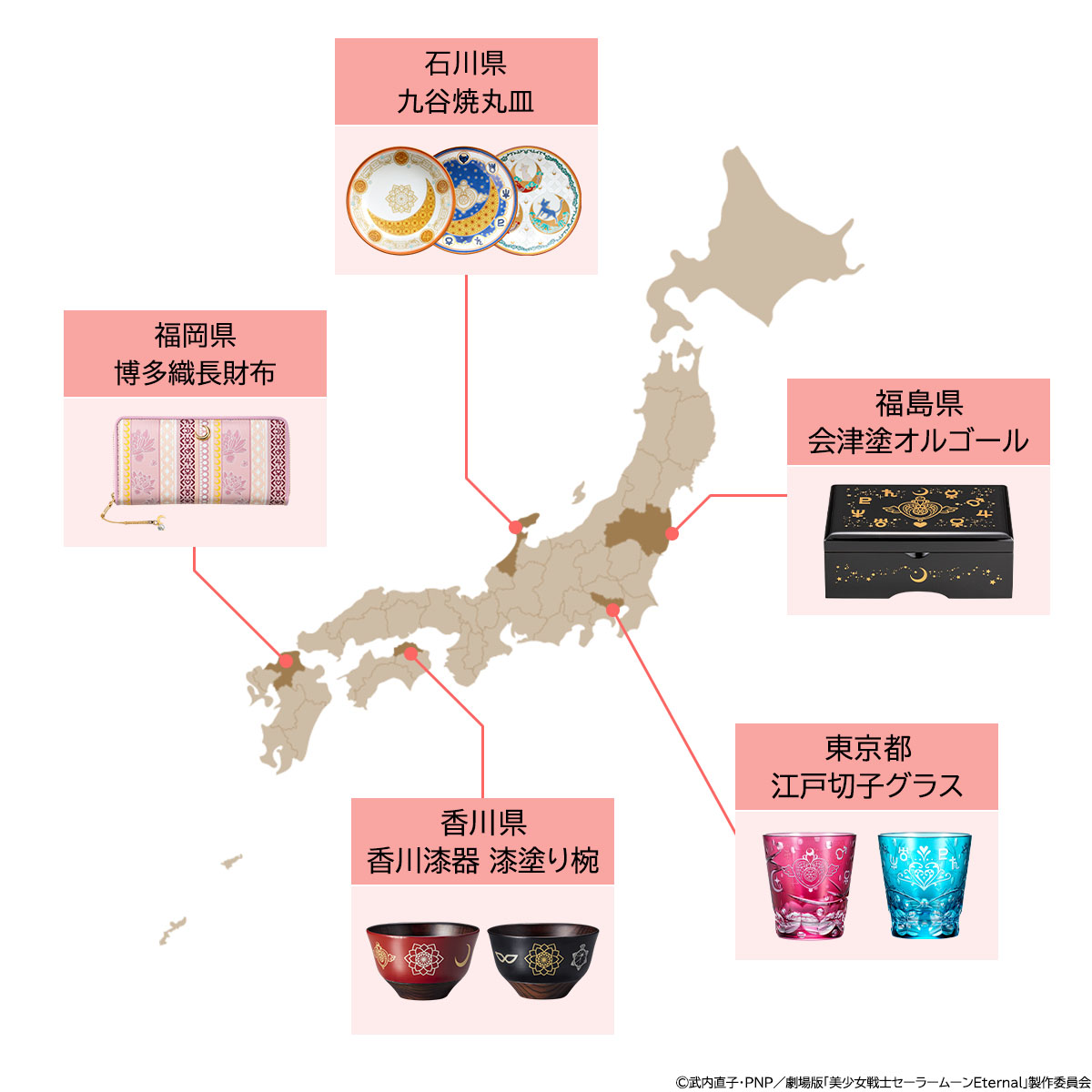
Be sure to get your hands on some of these exclusive collaboration items!
Fukushima Prefecture – Aizu Lacquer Music Box
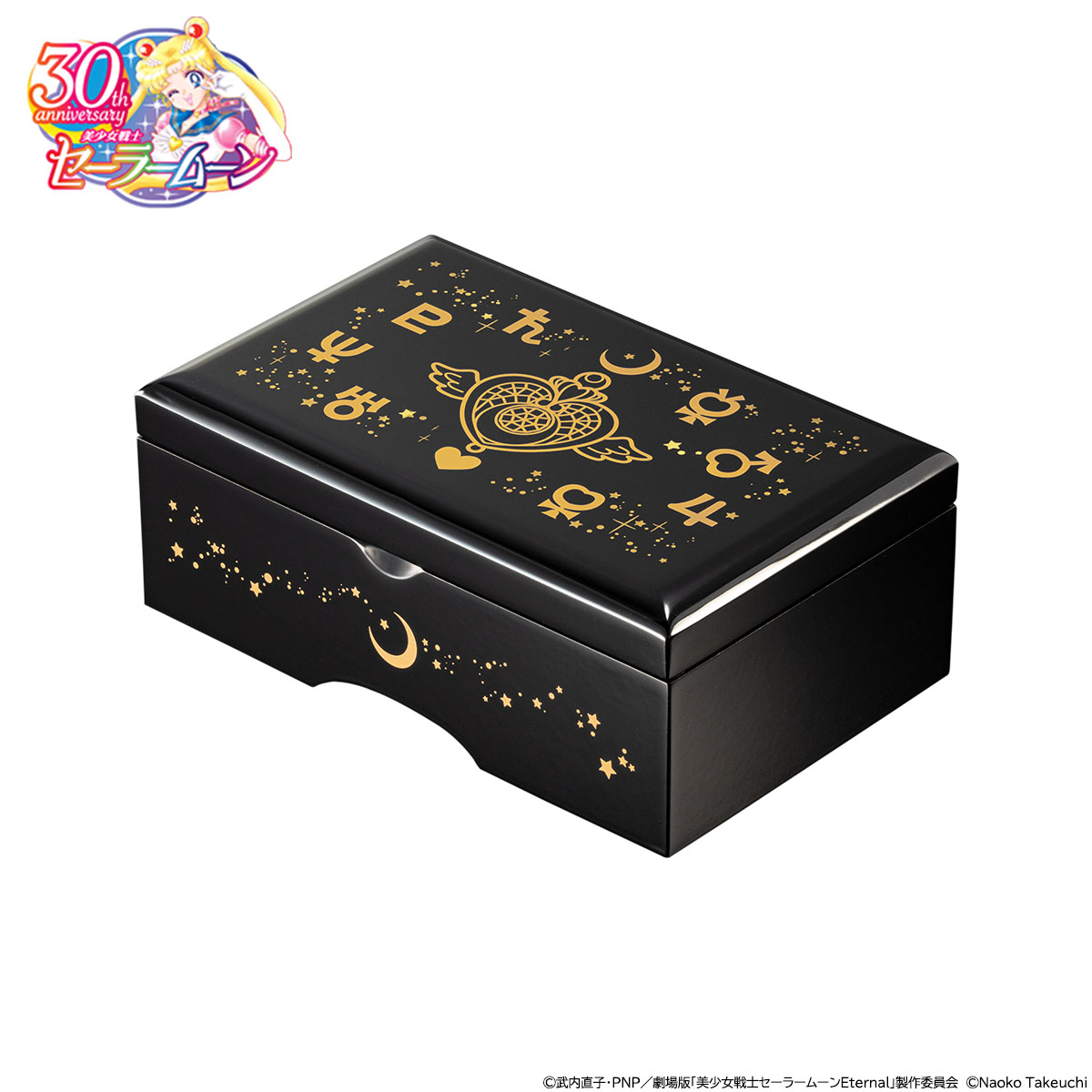
Aizu lacquer ware has a history of over 400 years in the Aizu region of Fukushima Prefecture. Sailor Moon’s Crisis Moon Compact has been painted on glossy black lacquer, and the symbols of the ten Sailor Soldiers surround it. By opening the lid, fans will hear the show’s theme song, Moonlight Densetsu.
Ishikawa Prefecture – Kutani ware Dishes (Set of 3)
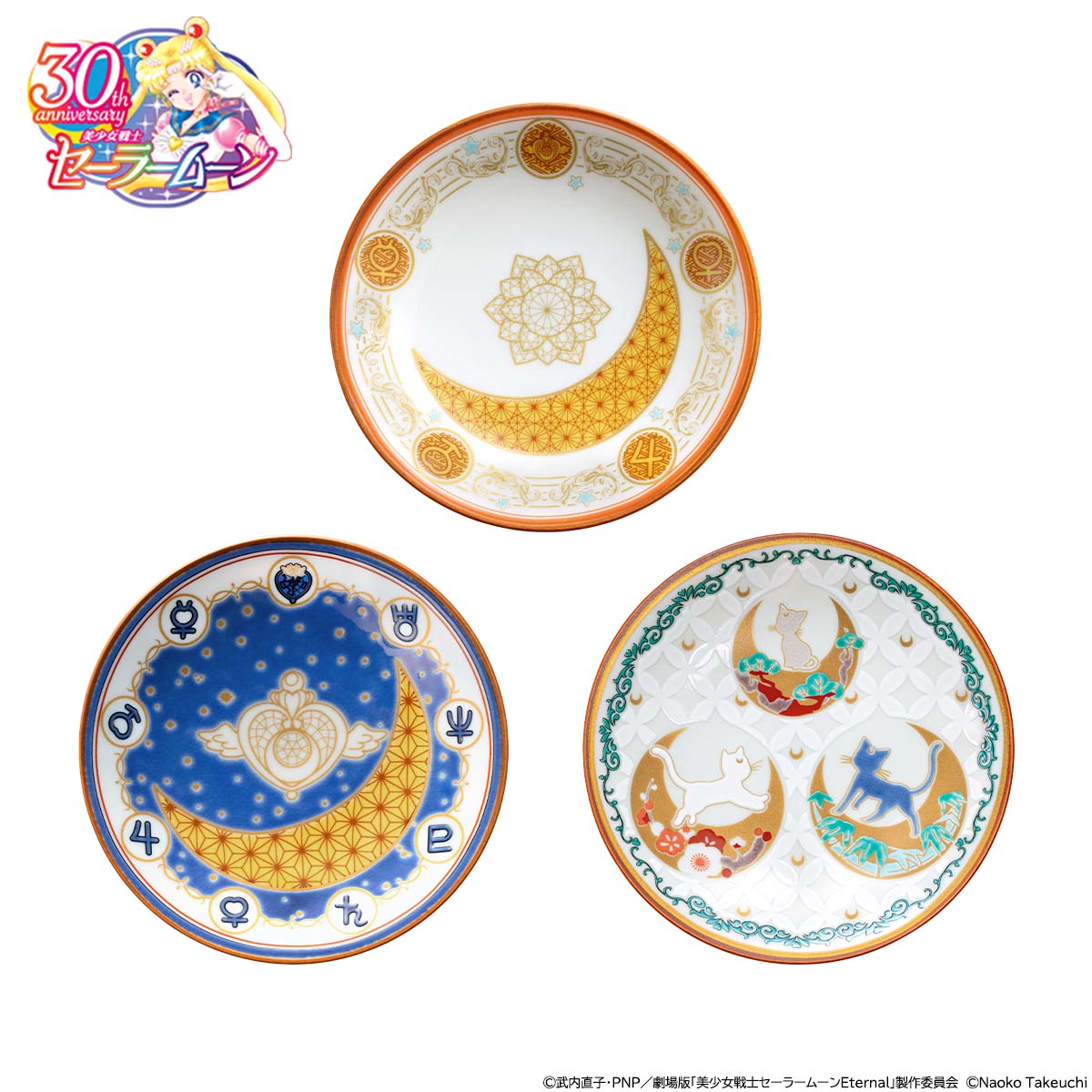
Kutani ware, a style of Japanese porcelain, is produced in the Kaga region of Ishikawa Prefecture. The vivid colors seen on these plates were inspired by the brightness of the Sailor Moon franchise. The set includes three plates: one inspired by the inner soldiers, one featuring both the inner and outer soldiers, and one displaying everyone’s favorite cats, Luna, Artemis, and Diana.
Tokyo – Edo Faceted Glass
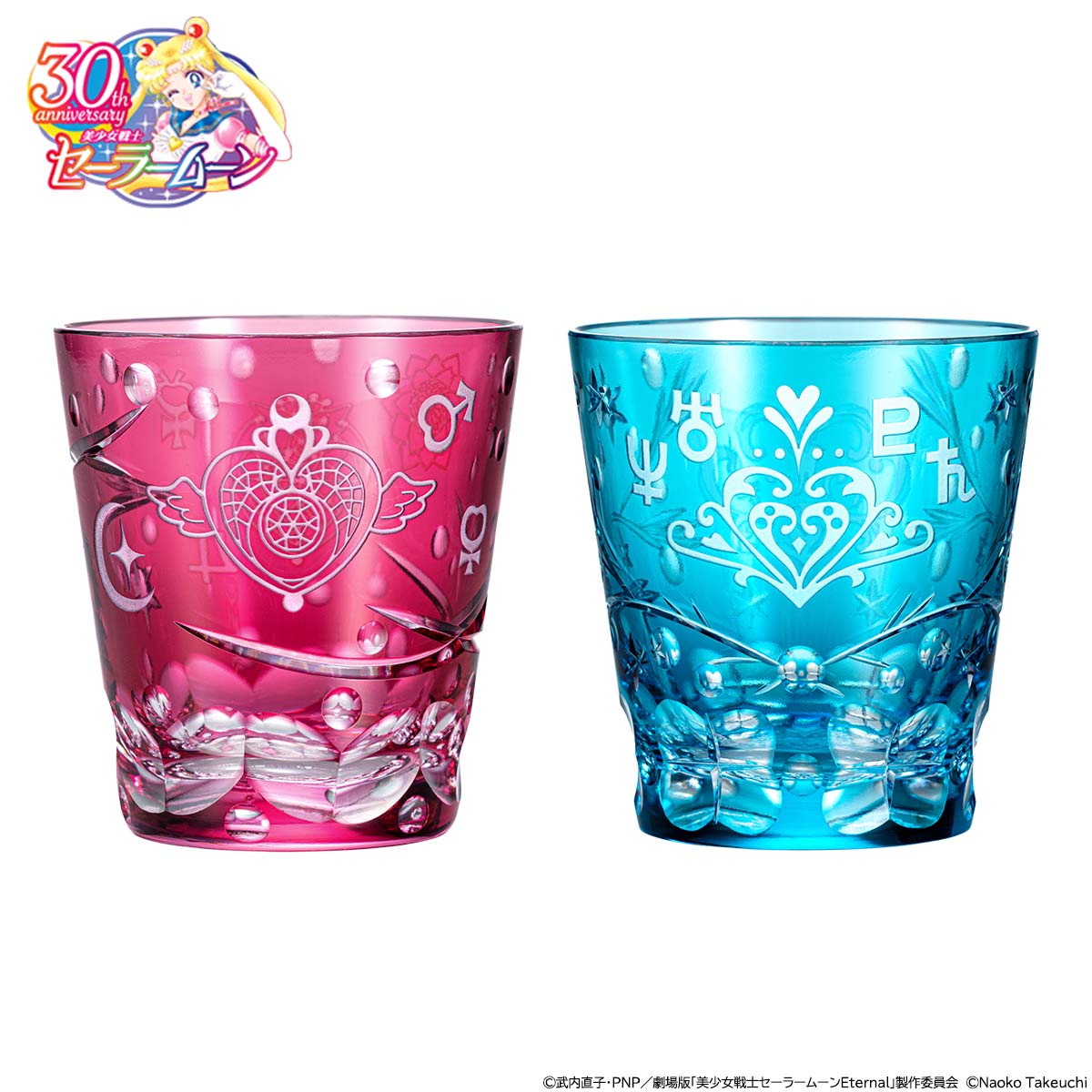
This Edo faceted glassware depicts the twinkling of the stars, each made with care by a dedicated craftsman. Two colors are available: a light crimson color with the symbols of the inner soldiers and Super Sailor Chibi Moon and a lapis lazuli color with the symbols of the outer soldiers.
Kagawa Prefecture – Wooden Kagawa Lacquerware Bowls (Set of 2)
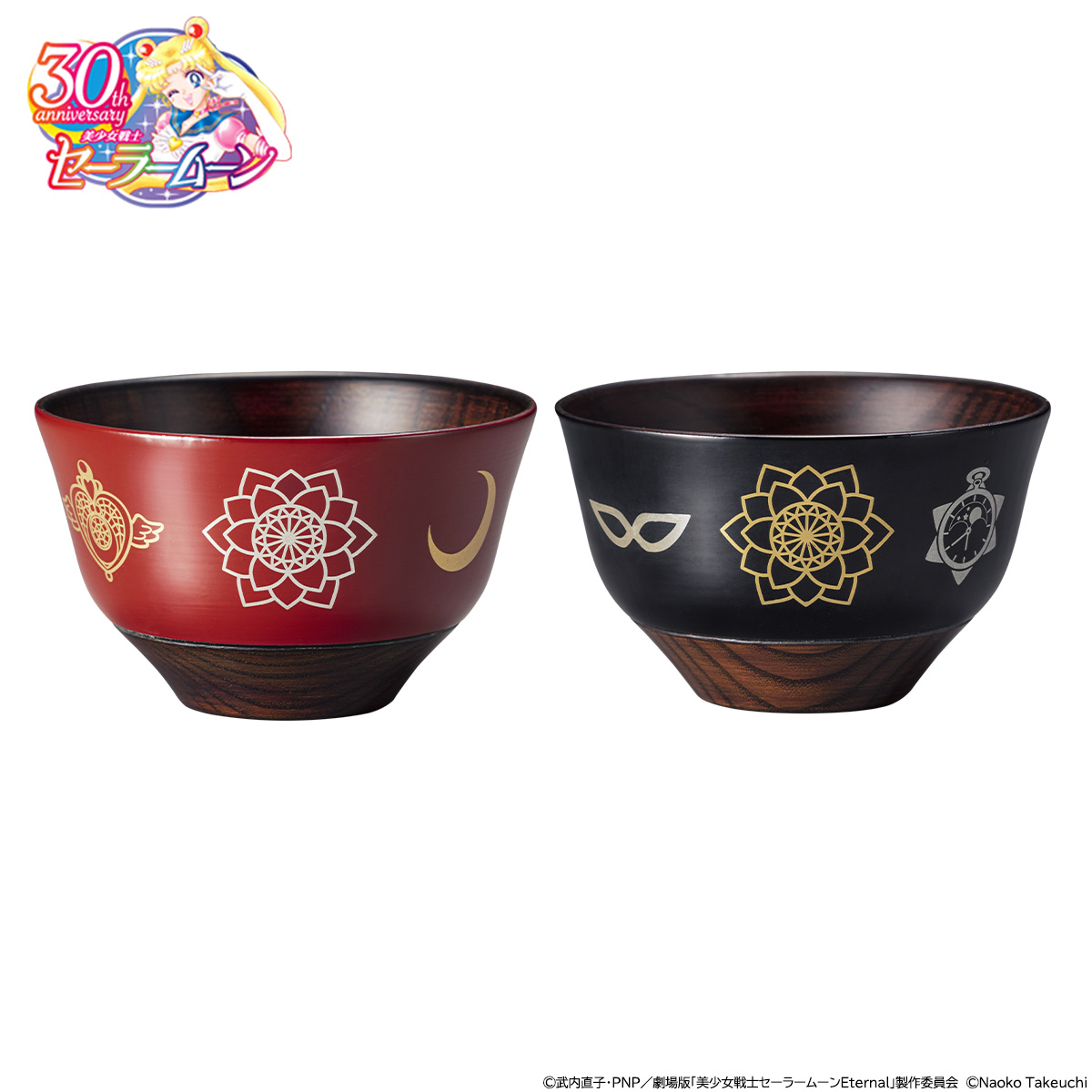
Kagawa lacquerware is characterized by its use of colorful lacquer to create delicate and detailed patterns. This pair of bowls feature the symbols of Super Sailor Moon and Tuxedo Mask on bright vermilion and black backgrounds.
From the Crisis Moon Compact and the Silver Crystal to the famous Mask, these bowls are decorated with gorgeous gold and silver coloring and traditional maki-e finishing.
Fukuoka Prefecture – Hakata Woven Long Wallet
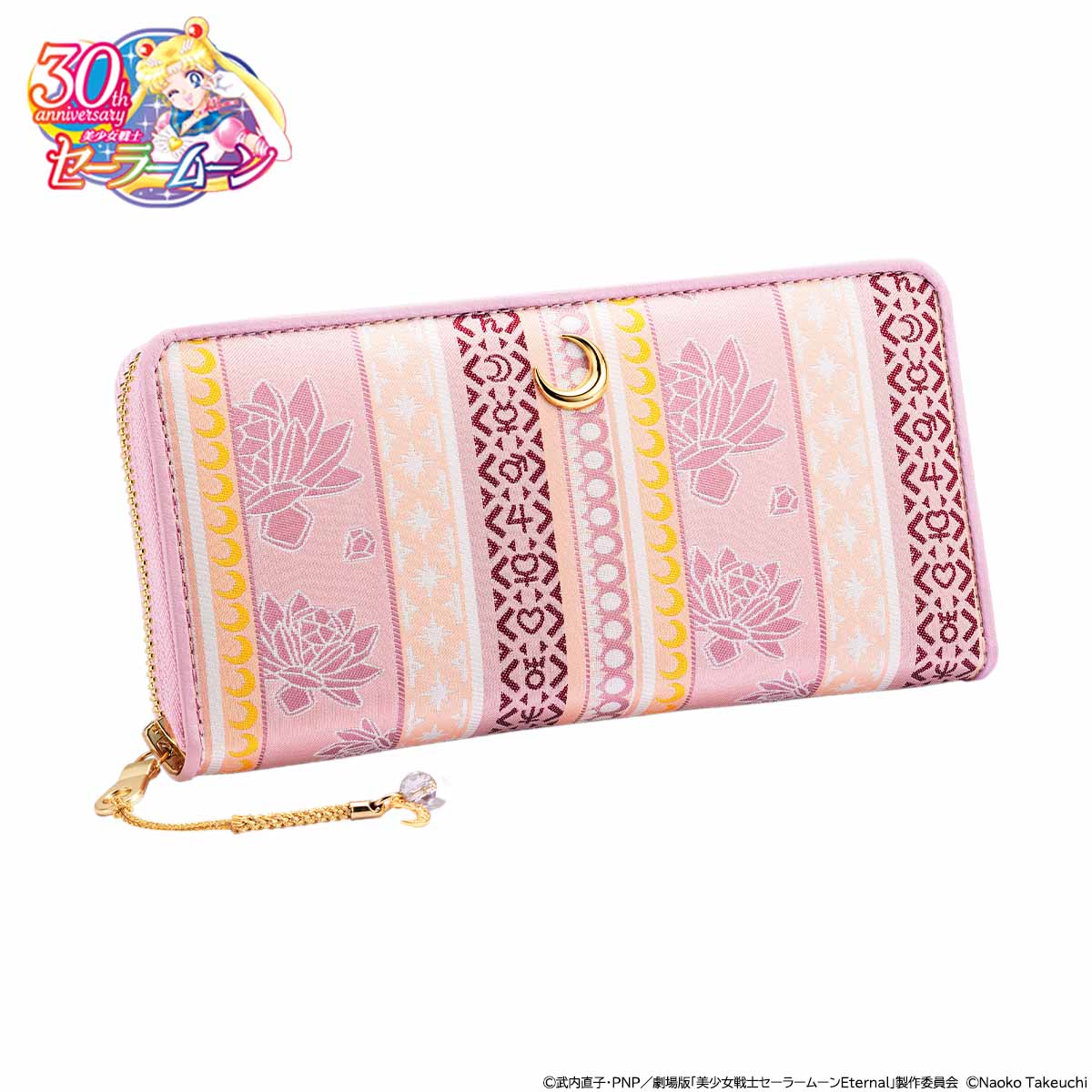
Hakata cloth is a silk fabric made by weaving a thin warp yarn and a thicker weft yarn together in a tightly-packed weave to create a stiff, ribbed appearance. This beautiful wallet features feminine colors and powerful symbols such as the legendary silver crystal and the inner soldier’s symbols, along with a golden crescent moon.
(c)武内直子・PNP/劇場版「美少女戦士セーラームーンEternal」製作委員会
Information
Details/Order: https://iei.jp/sailor-kougei/
-
Creative Social Media Site Behance Promotes Traditional Japanese Culture in New Project
29.June.2022 | FASHION
Behance, the world’s largest creative social media network, has started a new project to promote Japanese traditional culture and arts and crafts to the world. Works on Behance will be transformed into NFTs, with the goal to establish a new way for traditional craftsmen to profit from their work.
Japan’s traditional arts and crafts are well-known by many around the world. On the other hand, challenges still remain as many regions’ traditional manufacturing industries are digitized. Sharing more detailed information about these crafts with overseas markets has also been difficult.
According to the “Survey on the Revitalization of Local Traditional Manufacturing Industries” published by the Development Bank of Japan in 2018, Japan’s traditional arts and crafts industry peaked around 1980. Due to the recession caused by the burst of the bubble economy, the rise of inexpensive foreign products, and changes in lifestyle, the amount of production has been declining year by year. Compared with the peak period, current production has dropped to one-fifth or about 100 billion yen. The workers involved in traditional crafts are also aging, making it difficult to pass on their skills to younger creators.
On Behance, users can not only get inspiration from other people’s work but can also publish their own works and receive helpful feedback and comments. Marketing professionals also use Behance to find creators for campaigns and collaborations, and previously, a Japanese creator who had uploaded his work to the social media site was asked to illustrate the cover of the New York Times.

This project is designed to promote traditional Japanese arts and crafts in the hopes of supporting their continued development in the face of many difficult conditions.
-
Tokyo Handicrafts Craft Fair Exhibition at Matasuzakaya Ueno to Feature Panda Etched Edo Cut Glass
25.March.2022 | FASHION
The Tokyo Handicrafts Craft Fair Exhibition at Matsuzakaya Ueno will be running from March 23 until March 28, and guests will be able to pick up some incredible glassware at the event. Glasslab will be selling Edo cut glass with panda designs in three different colors. These will also be available online.
Panda Cut Glass Special Edition – Bamboo Version (Light Pink x Green)
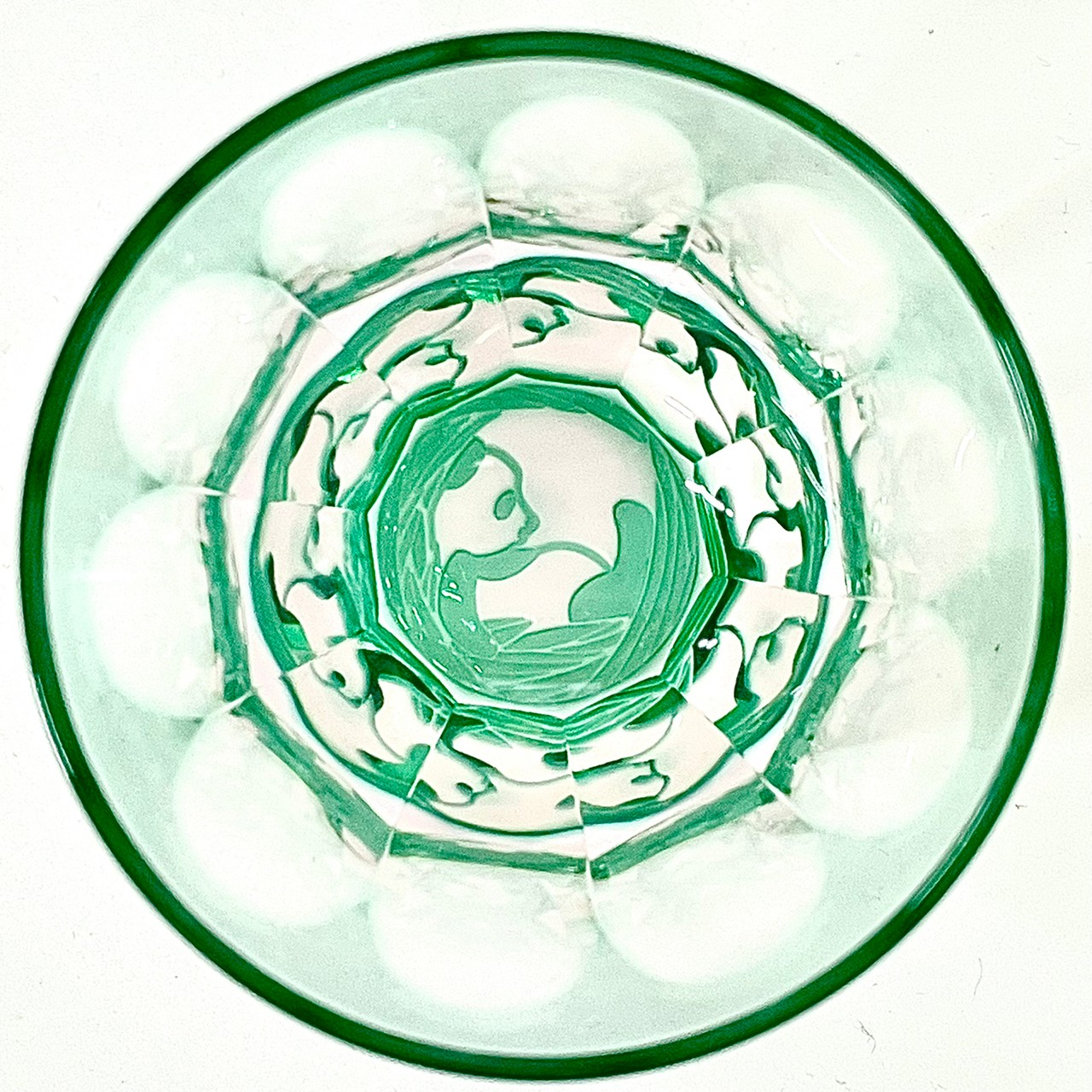
Before Adding Alcohol
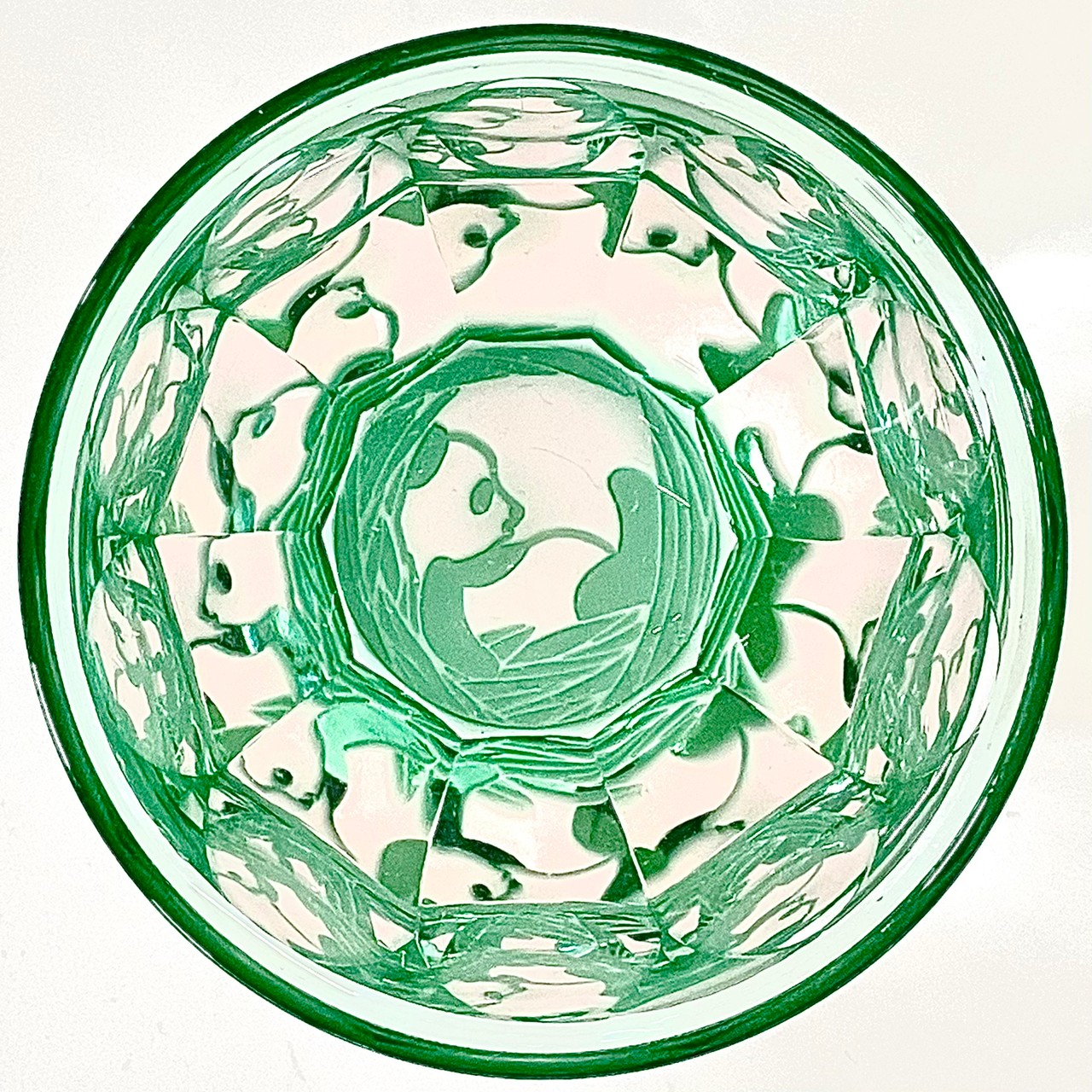
After Adding Alcohol
Panda Cut Glass – Lapis Lazuli Version (Light Blue x Lapis Lazuli)
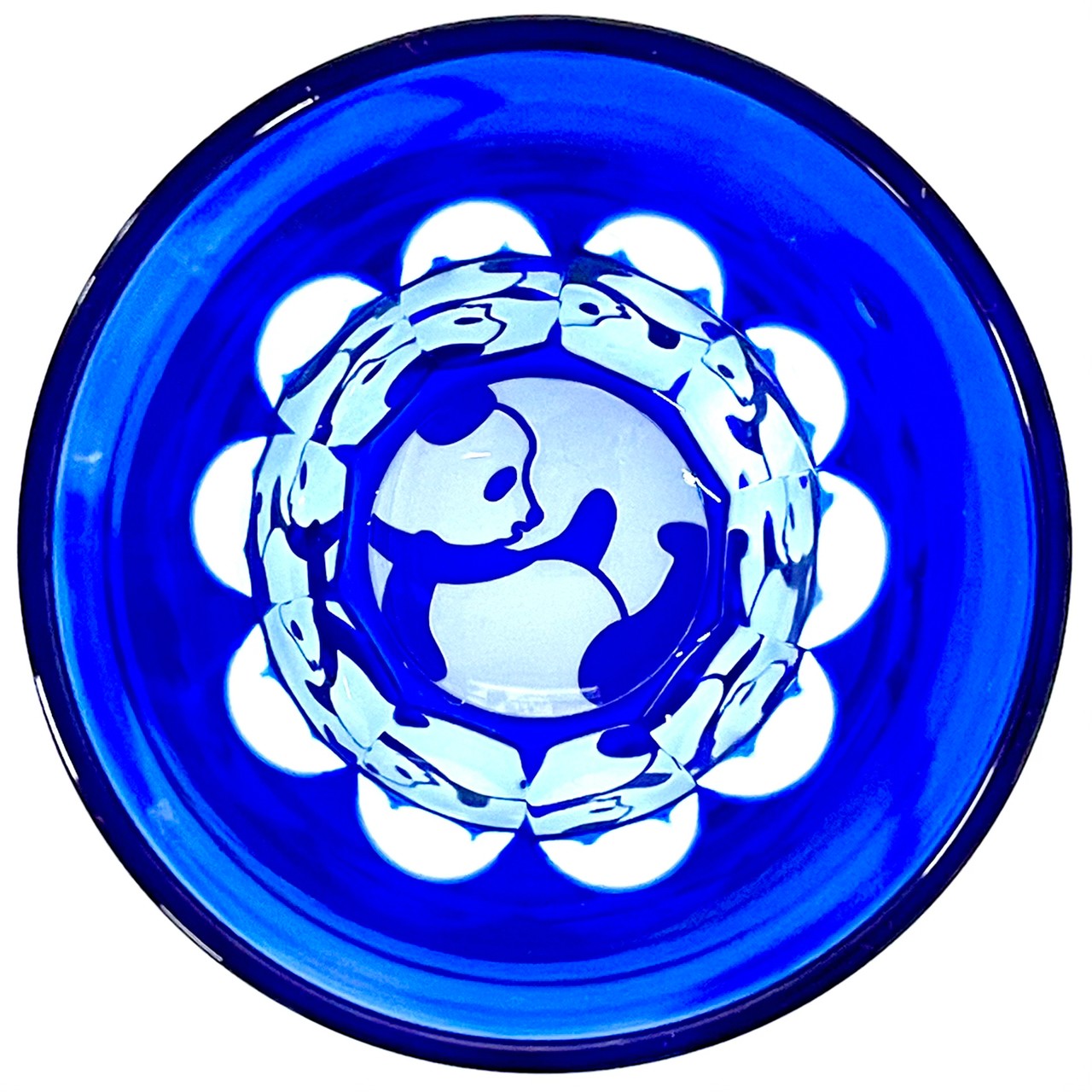
Before Adding Alcohol
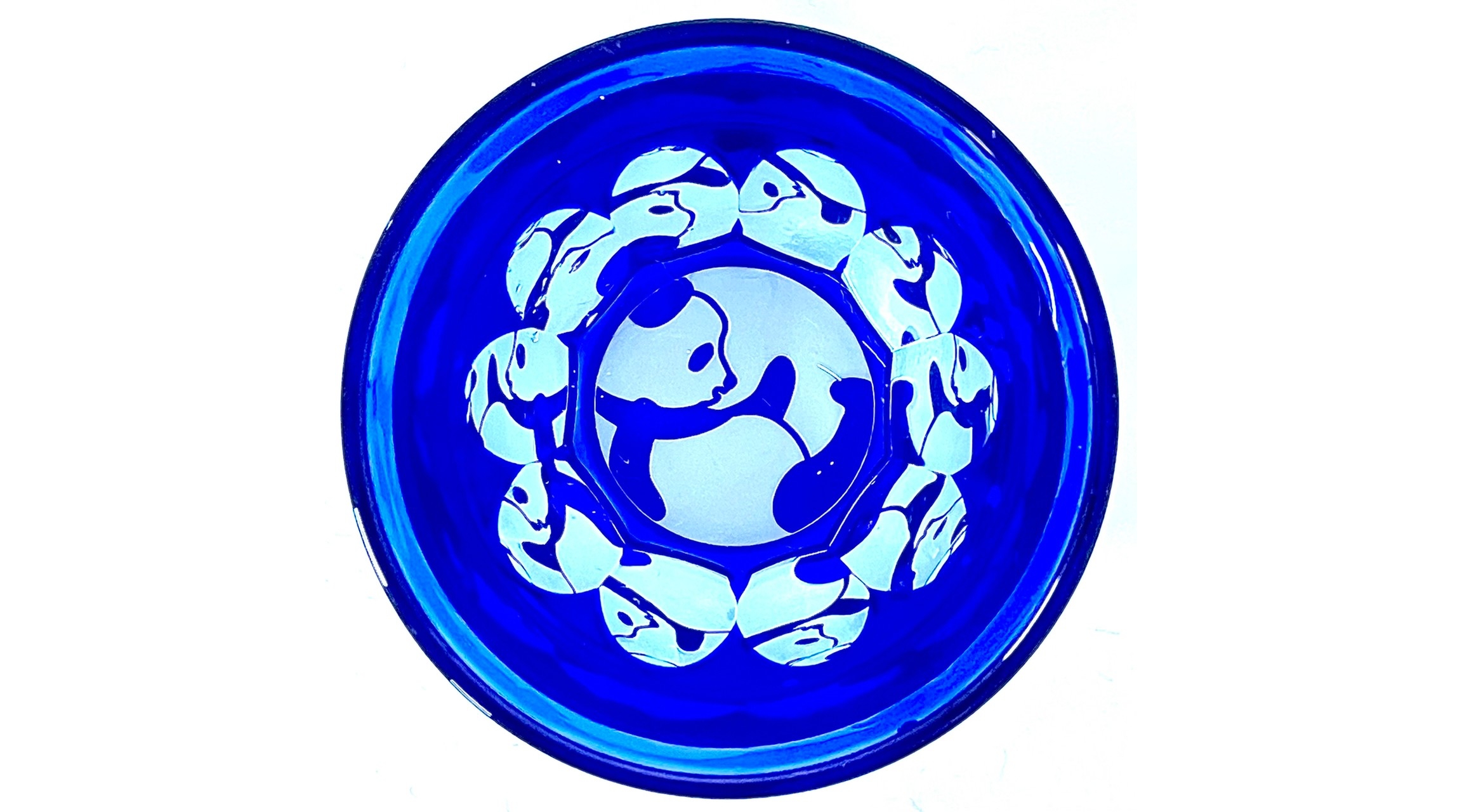
After Adding Alcohol
Panda Cut Glass – Yellow Version (Yellow x Bronze-red)
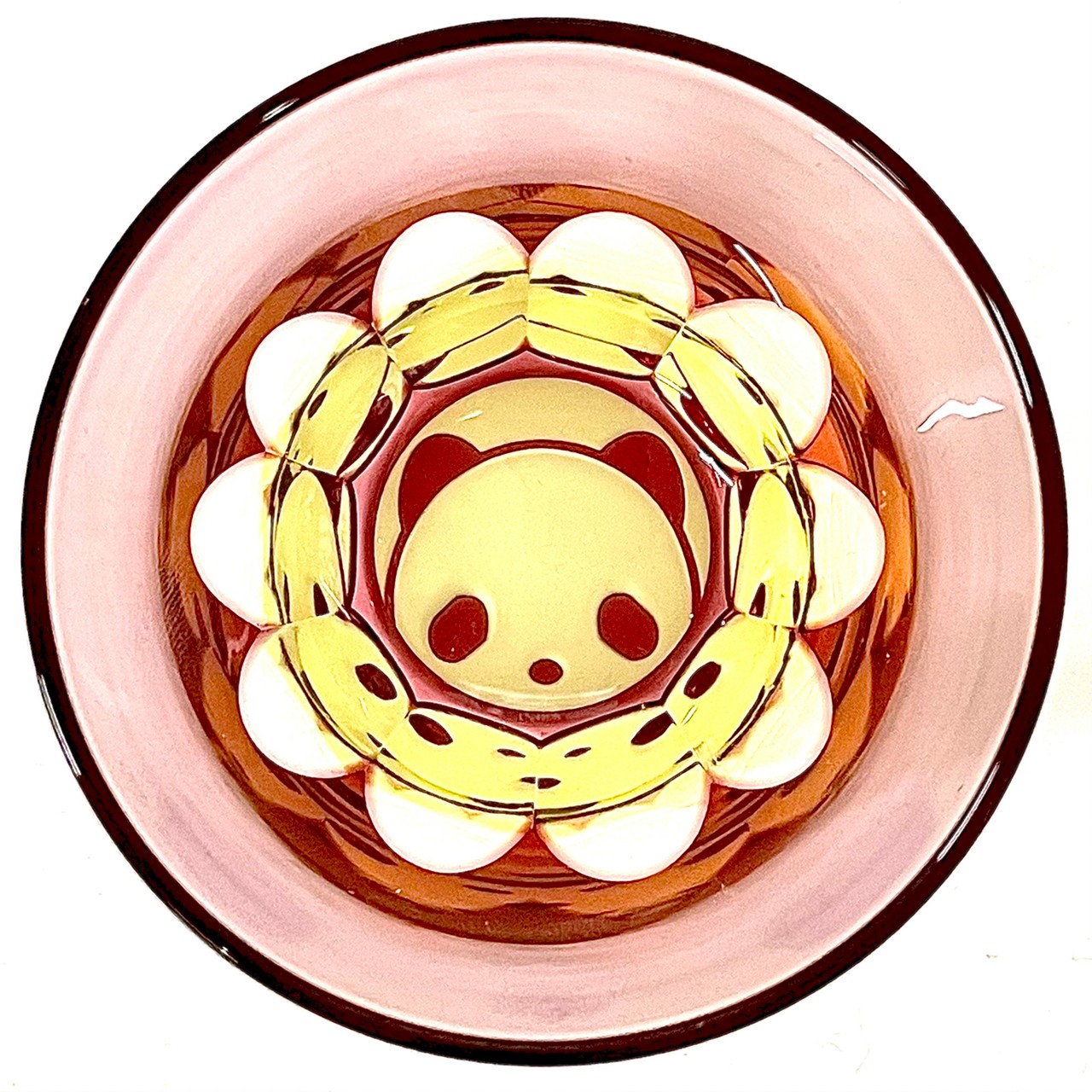
Before Adding Alcohol
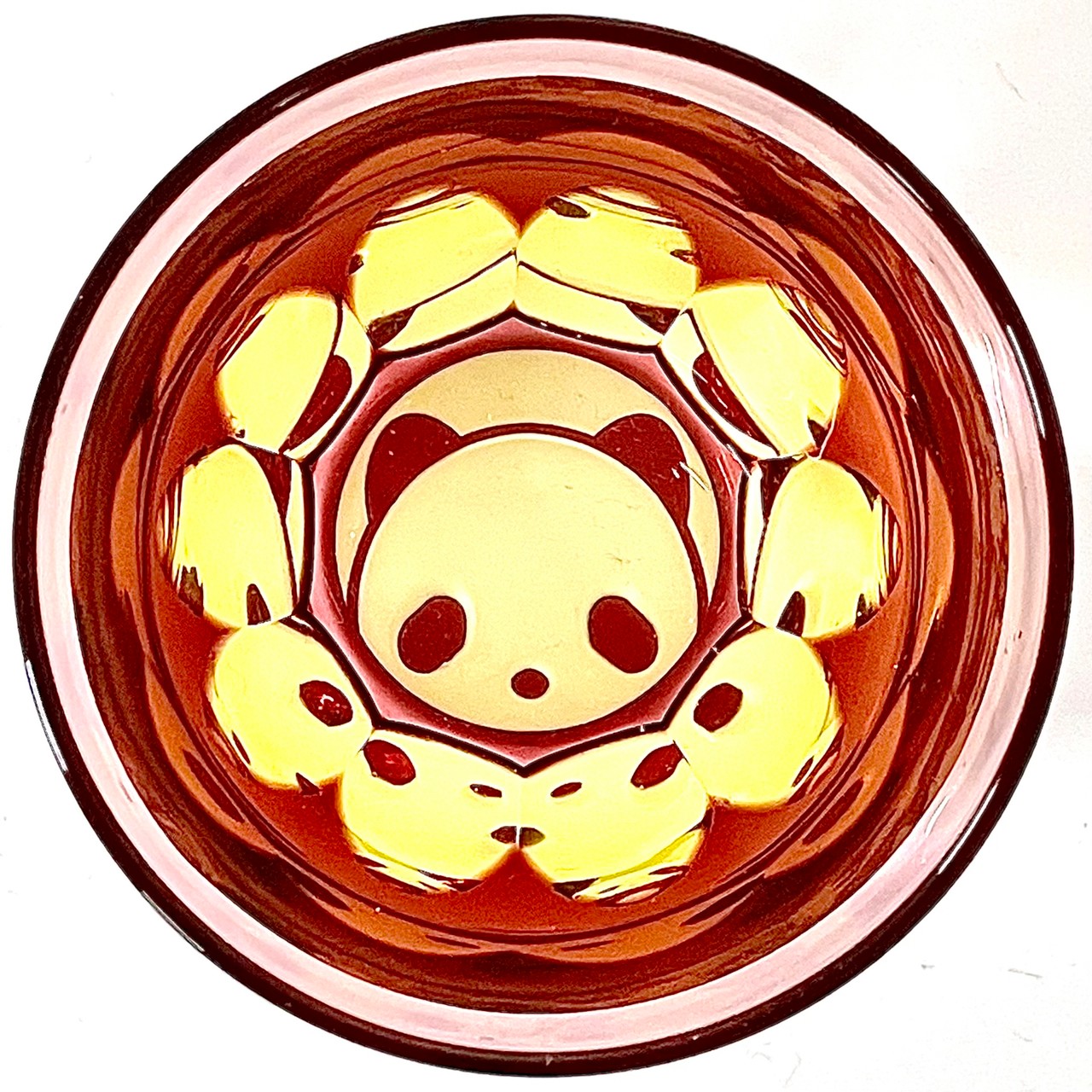
After Adding Alcohol
Edo-Kiriko gets its name due to it originating in Edo (modern-day Tokyo). Every detail is cut into the glass by hand to create stunning designs. The way the glass sparkles changes depending on the light, which is a sight to behold. In the latter part of the Edo period, the cut-glass method of engraving designs onto the surface of the glass was brought over to Nagasaki from the Netherlands, and kiriko was born as a result of trying to mimic those techniques. Shiina Yasutane is a third-generation craftsman specializing in ‘sandblasting, who can reliably draw lines as fine as 0.09 mm wide.
Information
Panda Cut glass
3 varietiesWhere to Buy:
Online Shop: https://glasslab.official.ec/
Tokyo Handicrafts Craft Fair Exhibition at Matasuzakaya UenoFair Running: March 23 – March 28, 2022
-
Ginza Tsutaya to Opens Spring Ceramics Fair
Ginza Tsutaya, located on the 6th floor of the GINZA SIX department store, is now holding a Spring Ceramic Fair until March 7, 2022.
Many popular ceramic artists are coming together for the event. This year’s lineup includes dishes and mugs with botanical patterns and animal motifs in spring-like colors to add color to tables and living spaces. A large number of works, from vases to tableware and even ceramic brooches, will be on display, including works by Wato Maekawa and Oda Pottery.
Participating Ceramic Artists
Ritsuko Imai
After studying pottery in England, Imai currently lives and works in Mashiko, Tochigi Prefecture. This year’s exhibition will show off her dyed works, including Zougan works, a technique in which different materials are inlaid into one material. Enjoy her small plates and teapots with soft colors.
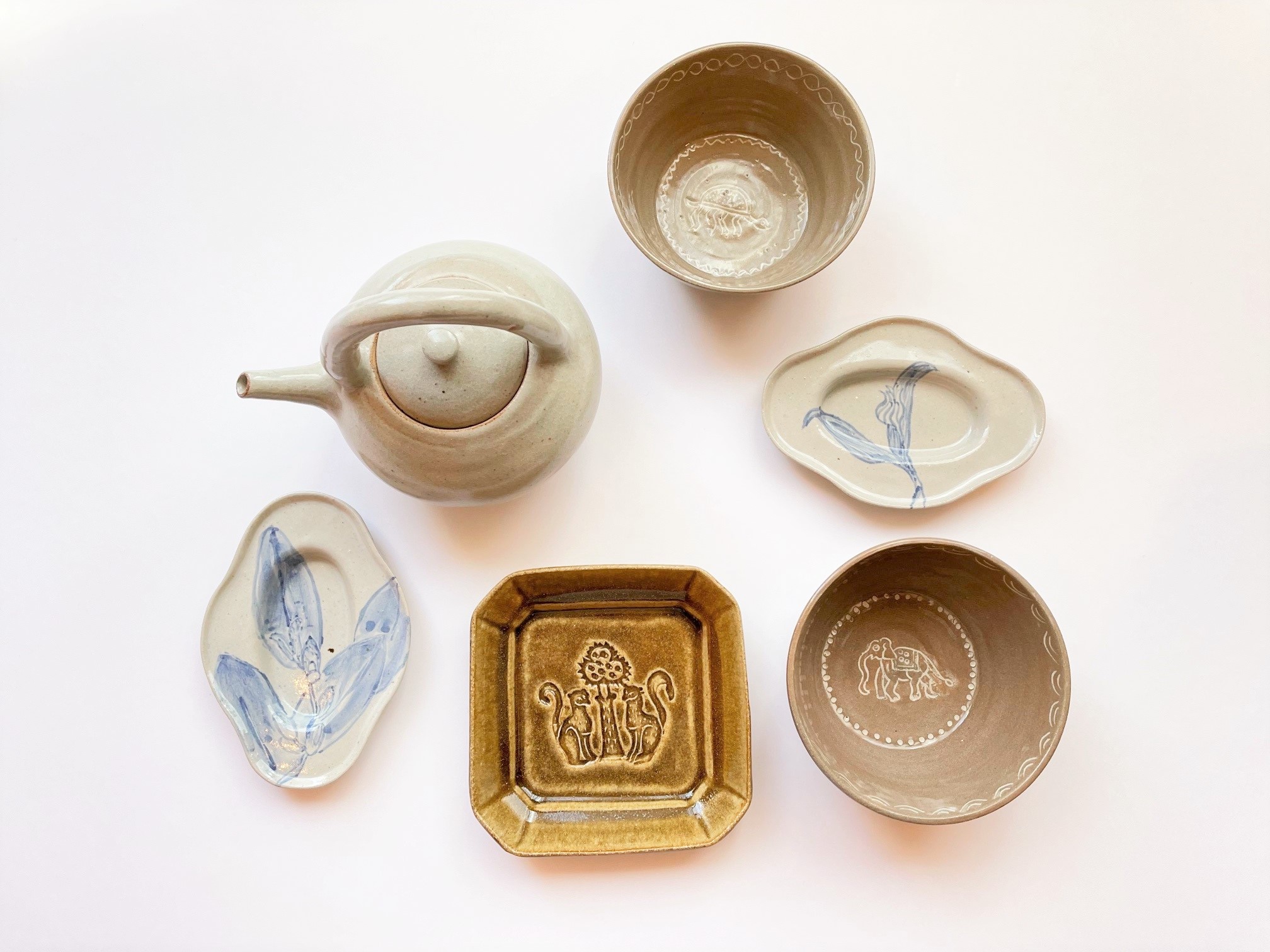
Miki Furuhata
Miki Furuhata is a pottery artist in Nagano. Using gentle colors and unique self-made glaze, her colorful pieces are a lovely addition to one’s daily life.
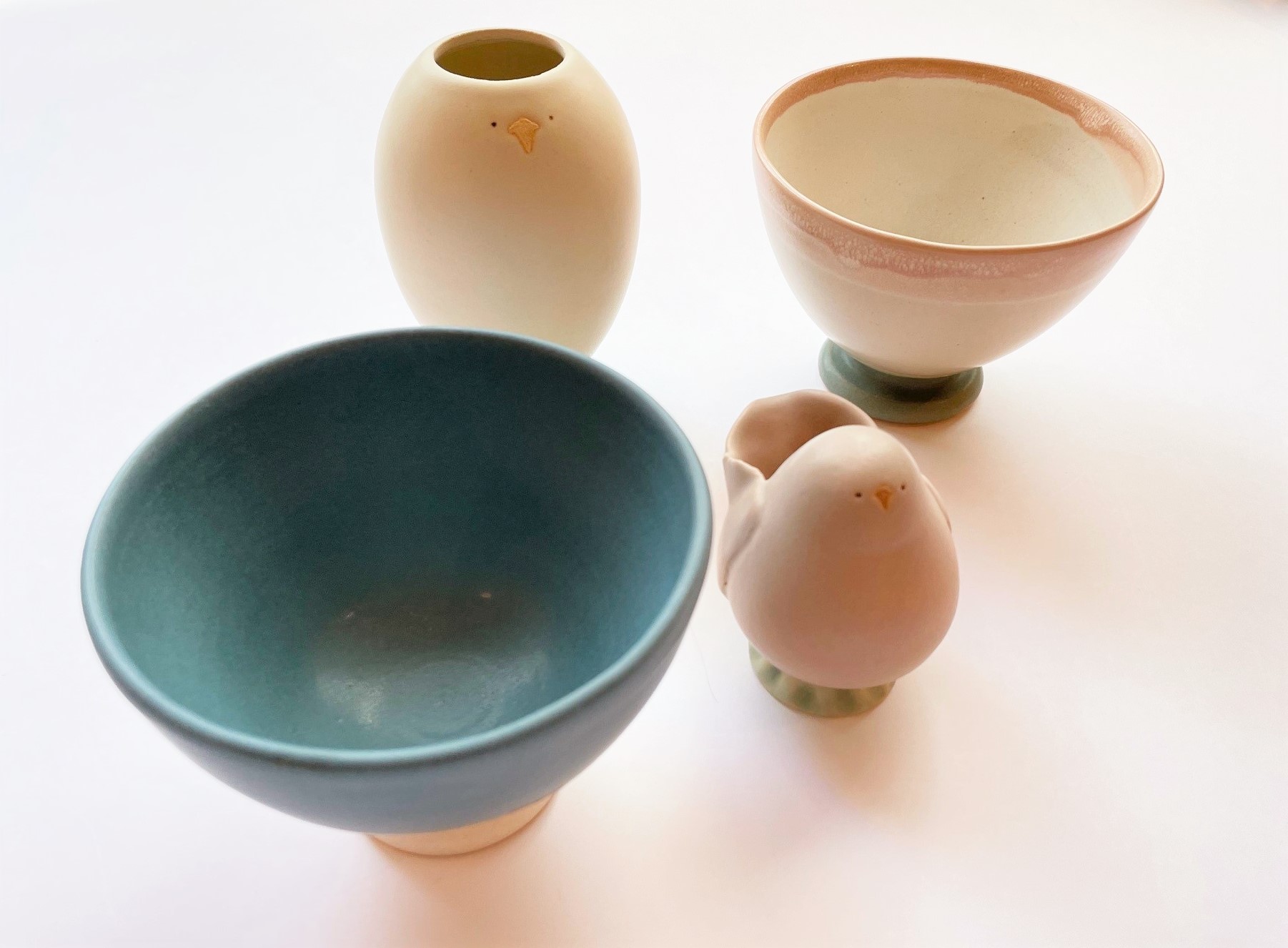
Hanako Sakashita
Hanako Sakashita uses a ‘kneading’ technique, in which colorful clays are kneaded together to create patterns, marbles, stripes, checks, and countless other patterns. Enjoy the many textures, shades, and patterns found in her works!
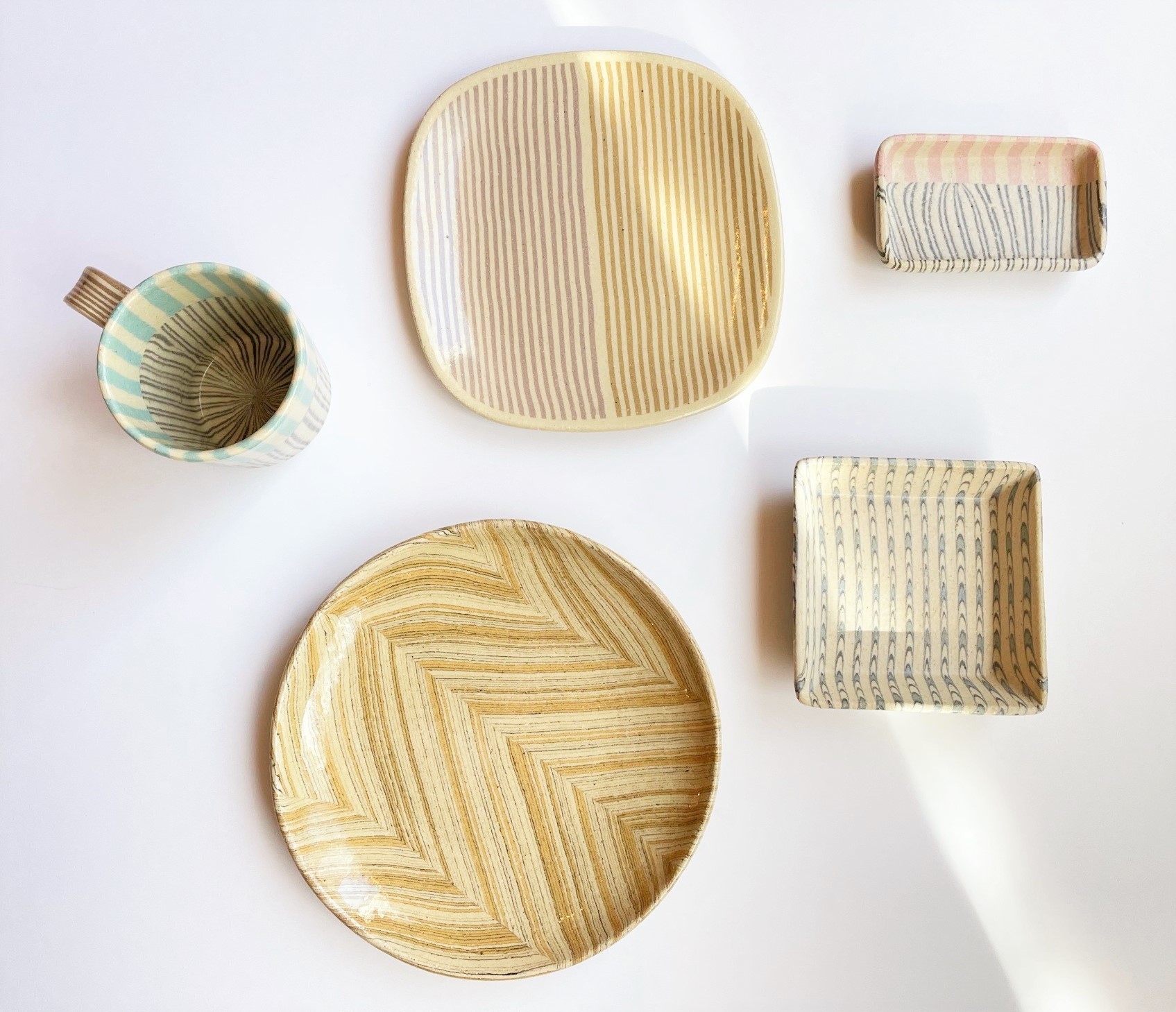
Wato Maekawa
A ceramic artist living in Toyama Prefecture, Wato Maegawa creates works inspired by the four seasons. Her flower-shaped plates are reminiscent of Japanese sweets.
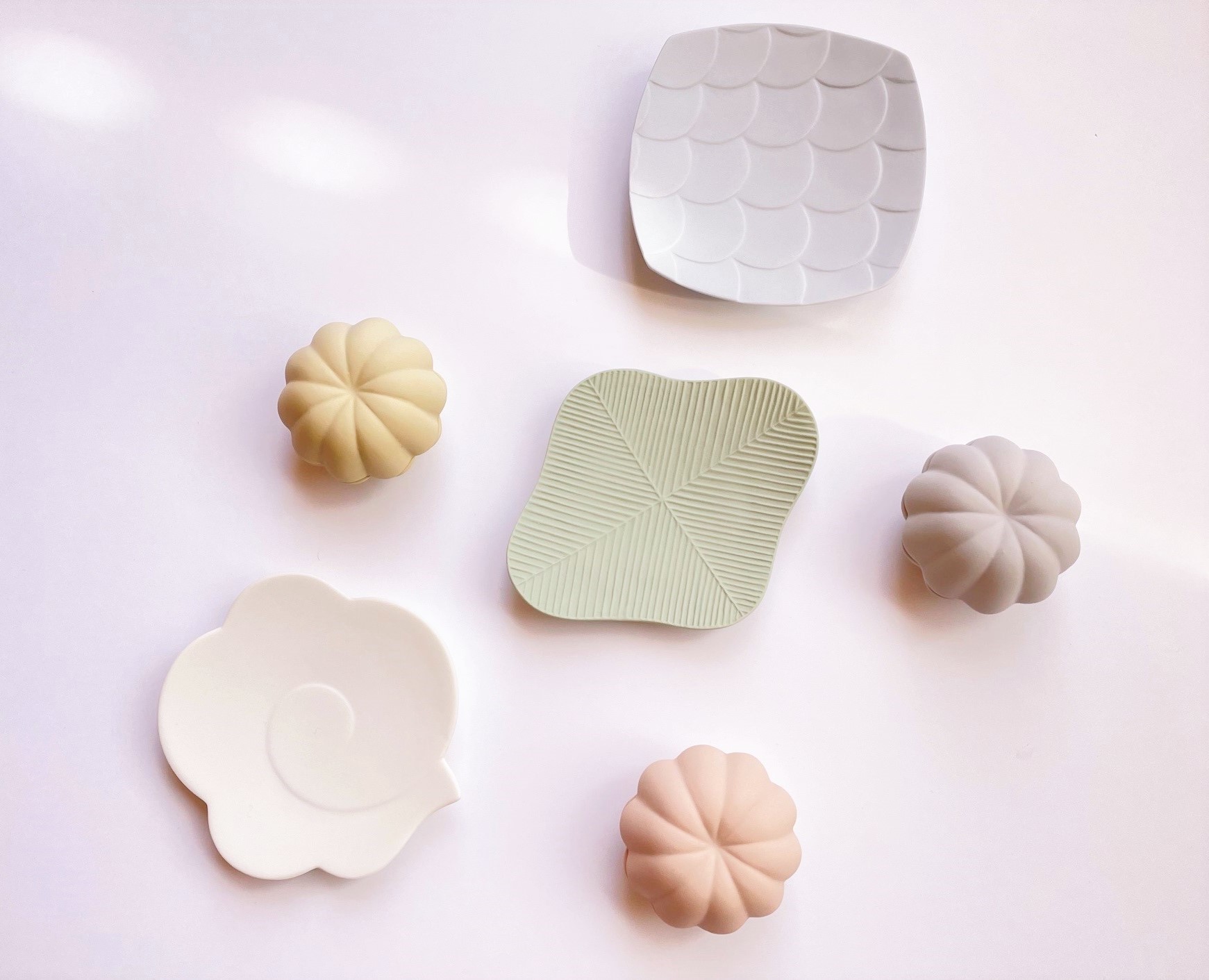
ToutousyaUsing candle wax to make prototypes, these ceramic brooches and boxes are made with a technique adapted from candle making. These hand-painted pieces are very popular, and those on sale in this year’s exhibition are covered with flowers, birds, and animals in spring colors.
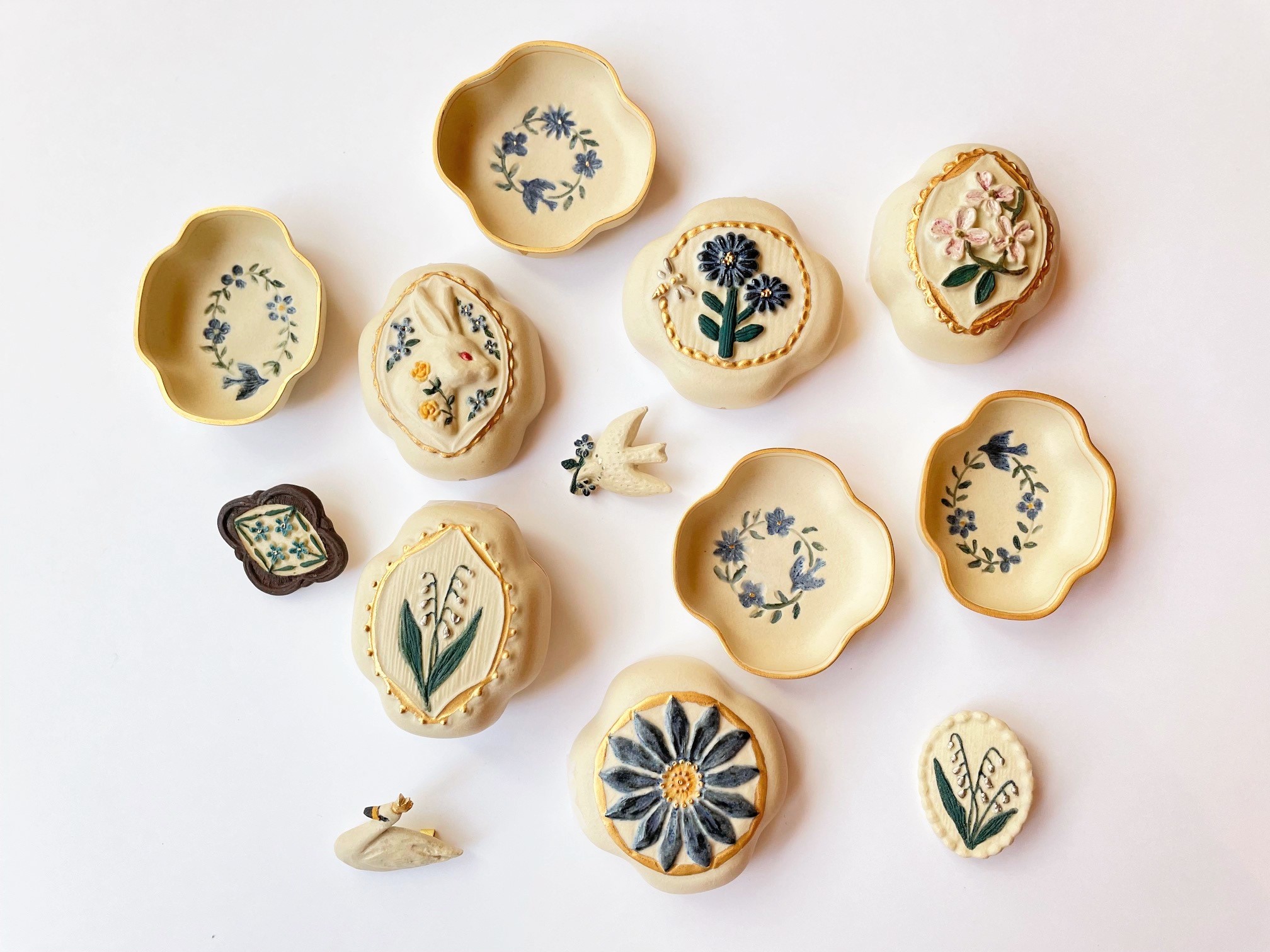
Oda Pottery
Oda Pottery was founded in 1921 in Mizunami City, Gifu Prefecture. Their lineup features vases that are easy to incorporate into any interior.
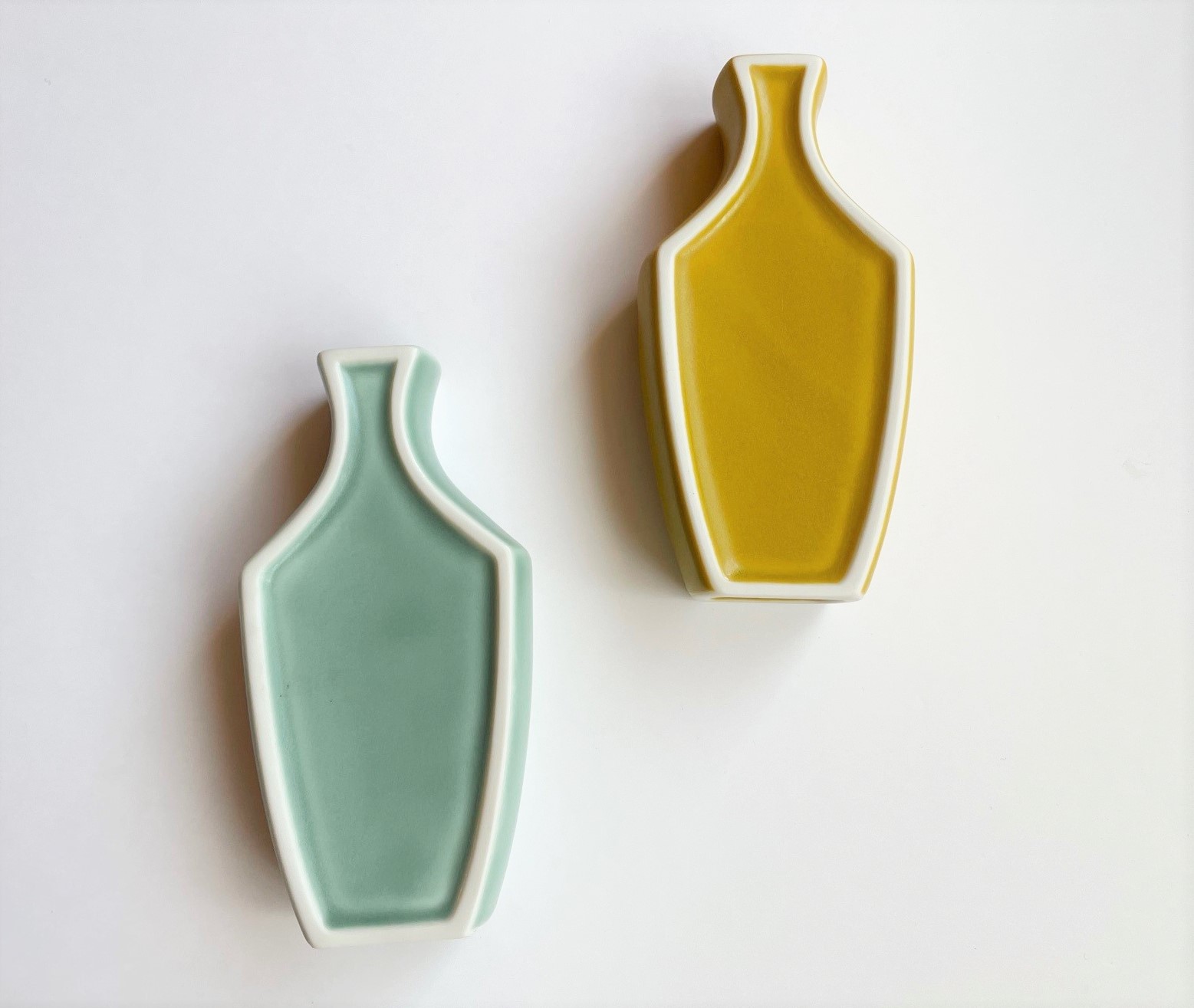
Information
Ginza Tsutaya Spring Ceramics Fair
Running: February 7 – March 7, 2022 *The exhibition will end when all works are sold.
Location: Stationary Area
Details: https://store.tsite.jp/ginza/blog/stationery/24699-1745430131.html -
NAKED Opens Traditional Craft Workshop in Saga Prefecture
Creative company NAKED has begun producing a collection of workshops on traditional crafts found in Saga Prefecture. Along with local creators, the event will continue through February 2022.
NAKED, together with Saga Prefecture, started a project called the ‘Saga Art Prefectural Government Project’ in 2016, which focuses on promoting the night economy in Saga. From the fall of 2021 until winter 2022, visitors to Saga will be able to enjoy a night walk surrounded by lanterns and local pieces of artwork.
During this event, workshops led by Saga’s top creators will invite visitors to create a number of unique, personalized items, from lanterns to hand lotion. Certain workshops are for both adults and children, making this a fun event for the entire family.
Workshops
aroma*aroma Fragrance School Seminar House: Aromatherapy Soap Making for Parents and Children
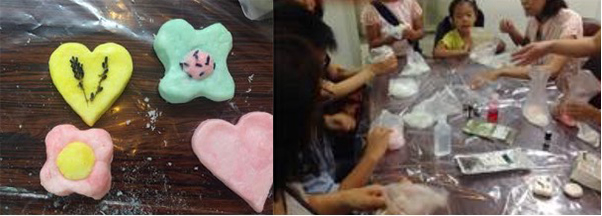
Arita Porcelain Lab Painting Experience
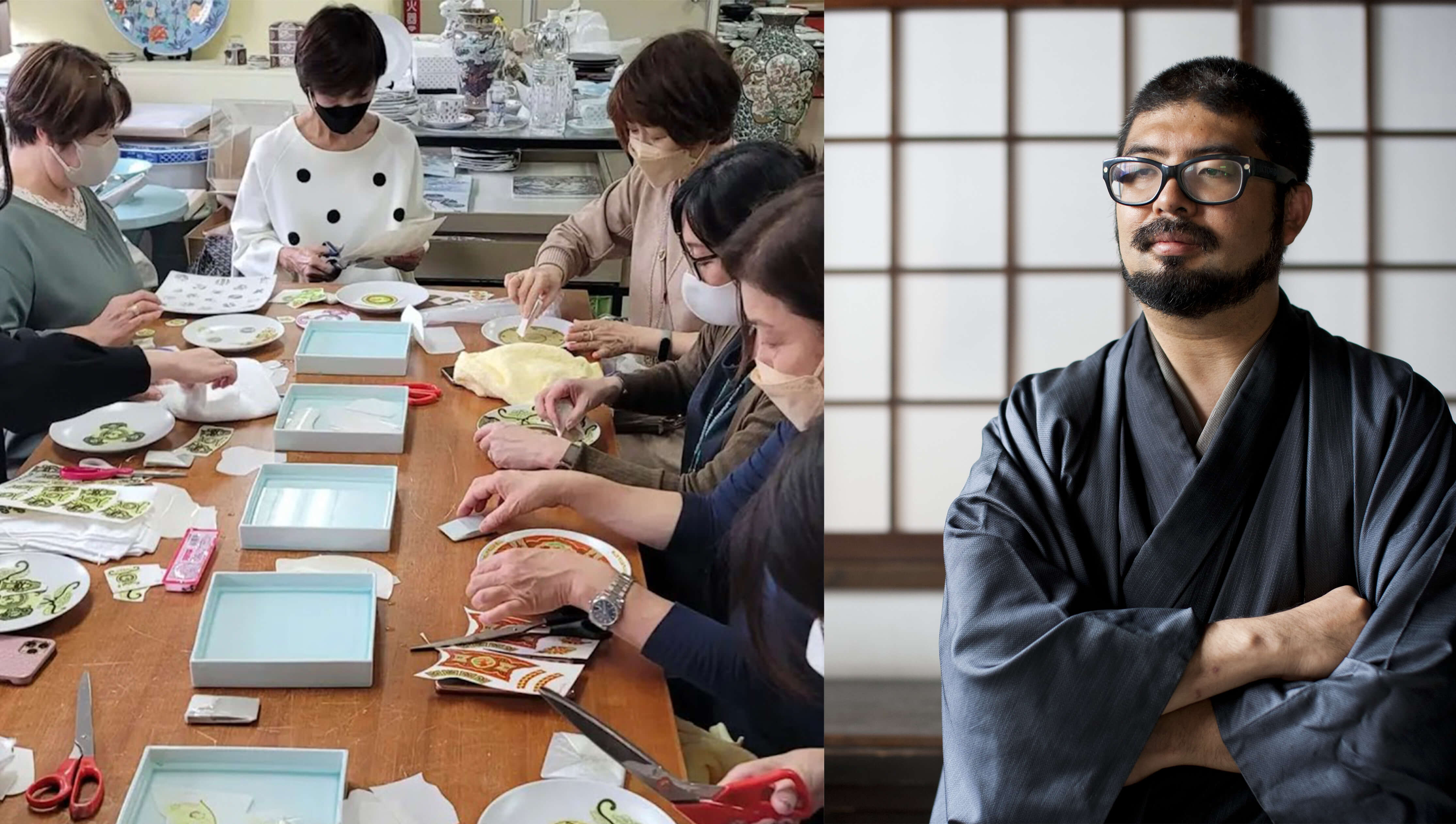
Ogi Akari Project Bamboo Lantern Making Experience

Making Magatama at Yoshinogari Historial Park
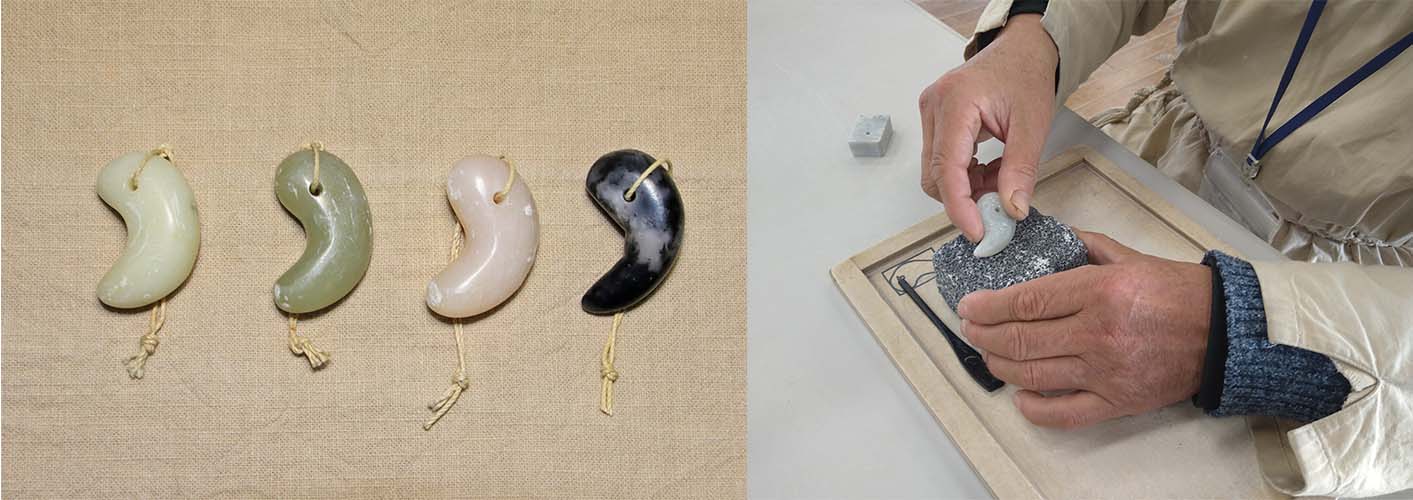
Balloon Museum: Paper Balloon Making Experience for Parents and Children
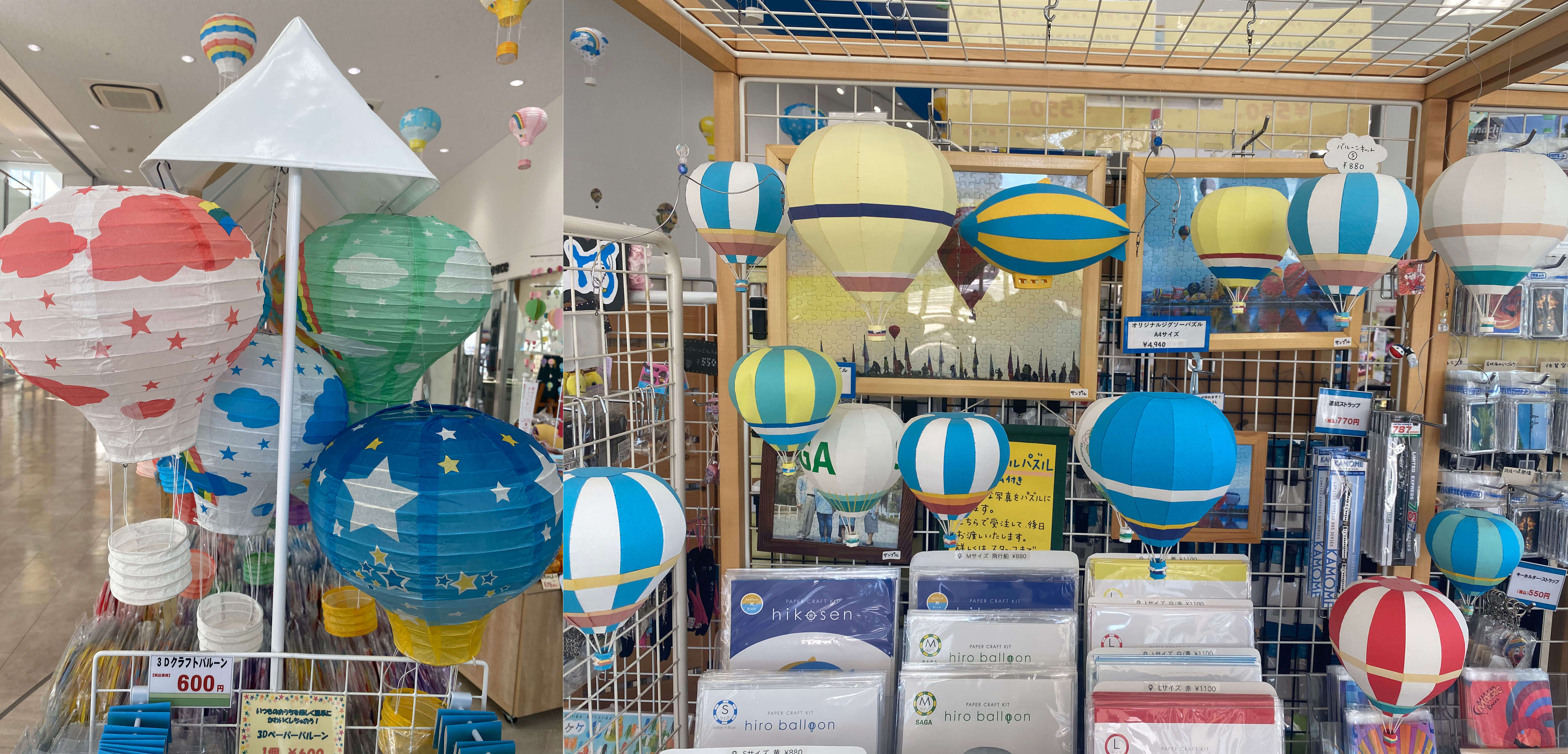
full of flowers hyakka Flower Swag Making Experience
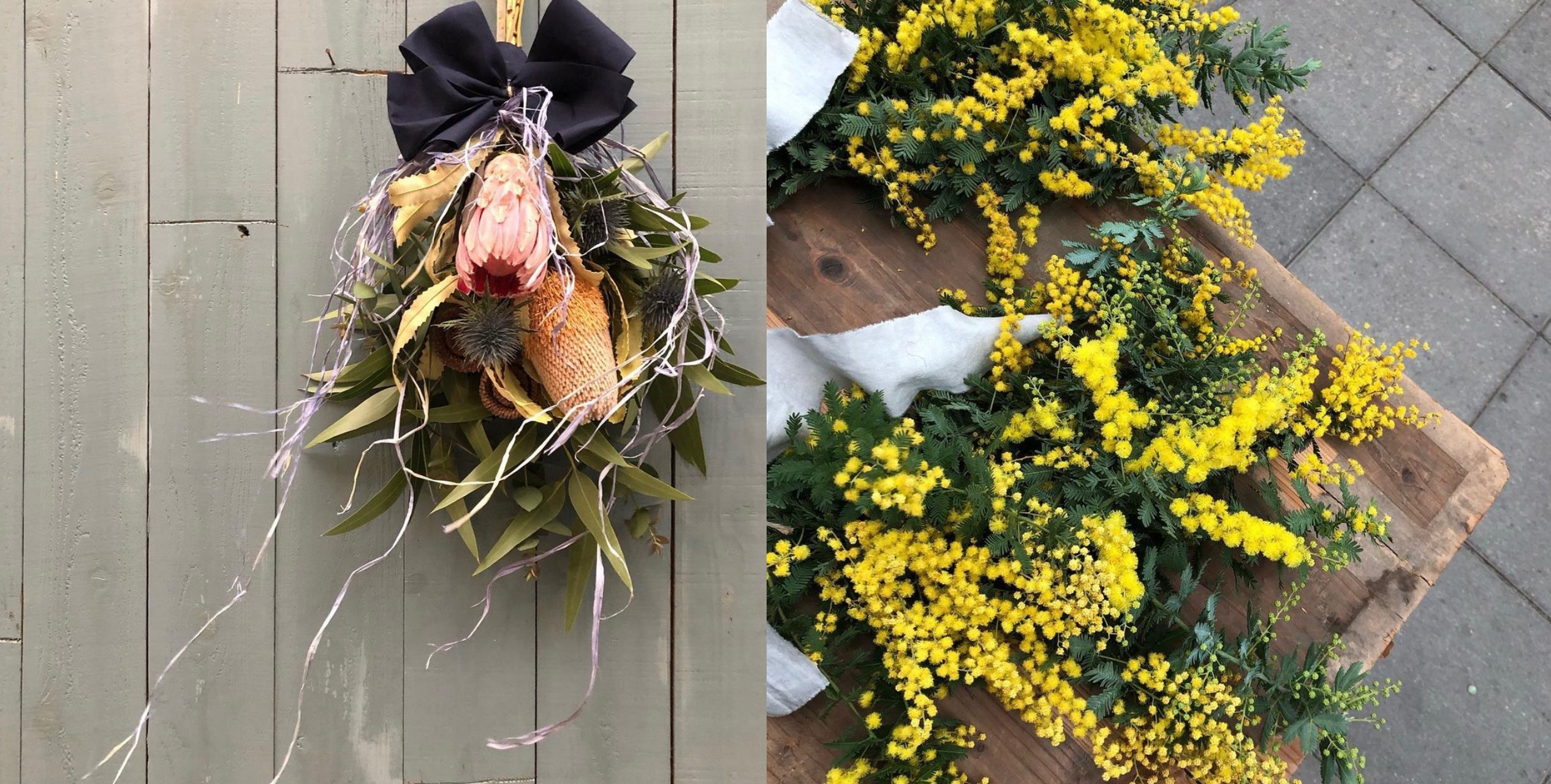
aroma*aroma Fragrance School Seminar House (with aroma lecture) Hand Cream Making Experience
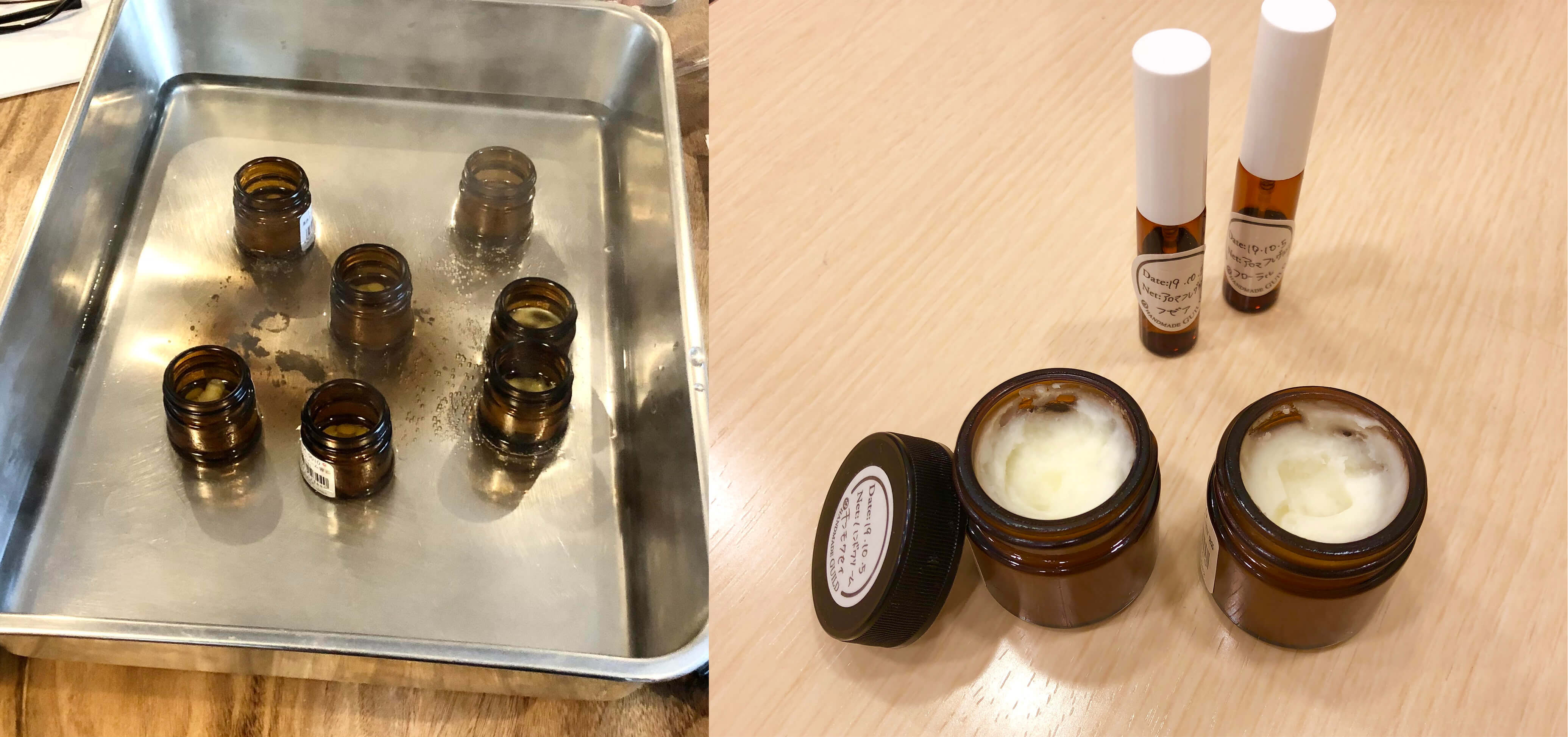
Bubbleman Store for Adults: Saga Lotion Making Experience/ Bubbleman Store Candy Soap Making Experience for Parents and Children

Ureshino Warmth Festival Lantern Making Experience

Information
Night Walking Art Display NAKED GARDEN SAGA
Address: Saga Prefectural Office, Top Floor Observation Hall
Running: October 1, 2021 – February 28, 2022
Hours: 18:30-22:00 *Final entry at 21:30
Tickets: https://w.pia.jp/t/nakedgarden-saga/Workshop Reservations: https://reserva.be/artkencho(Fee/Reservation Required)
Location: Saga Prefectural Office B1F ‘Sagachika’
Official Site: https://naked.co.jp -
Maruyoshi Kosaka Wood & Urushi Works Holds Pop-Up Event at Tokyo Midtown
The WISE・WISE tools Tokyo Midtown store provides helpful tools for daily life, including products from artisans and crafters from all over Japan. The shop focuses on sustainable and ethical items, and to promote the Maruyoshi Kosaka Wood & Urushi Works, the lacquerware maker is holding a pop-up store at WISE from January 7 until January 23, 2022.
Kisohirasawa in Nagano Prefecture has been selected as one of the Preservation Districts for Groups of Traditional Buildings and is famous for its local lacquerware. Visitors to the pop-up event can enjoy a variety of new lacquerware products that embody traditional Japanese beauty and style.
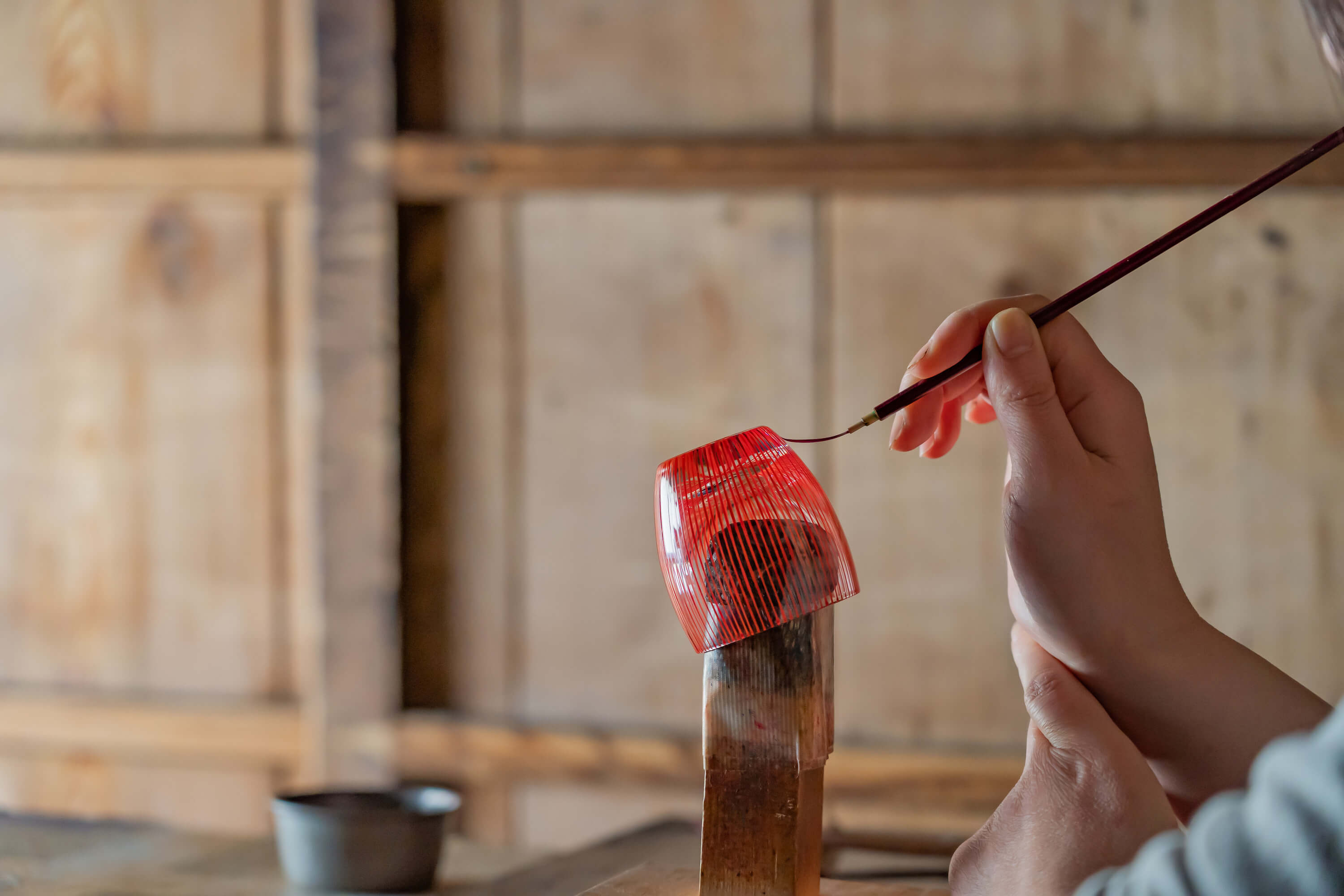
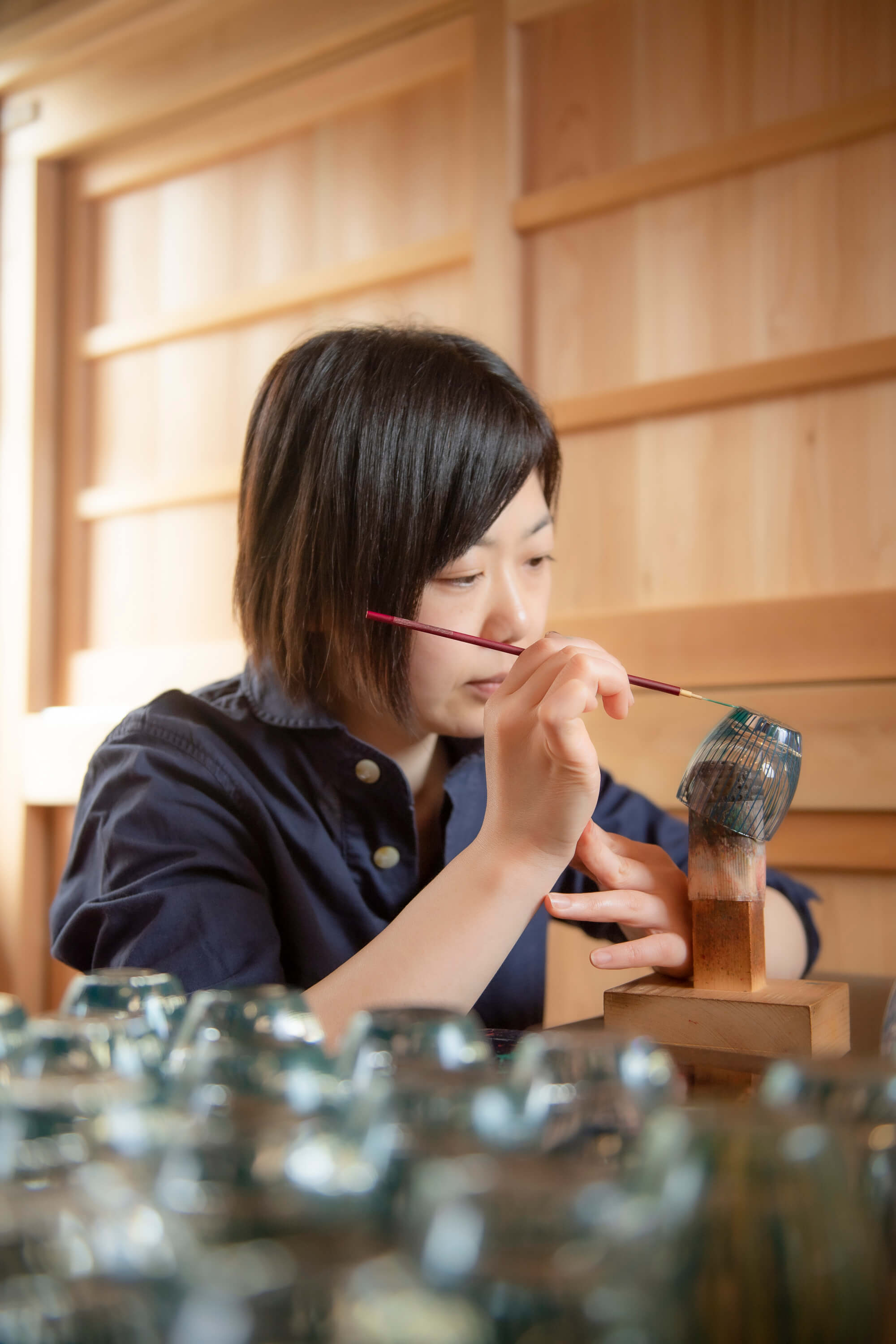
Maruyoshi Kosaka Wood & Urushi Works is an artisan workshop exploring new iterations of lacquer that reflect modern life, while also utilizing the tradition of Kiso lacquerware. Lacquer glass is hand-painted one color at a time by skilled artisans, combining traditional colors with a translucent texture to create one-of-a-kind pieces.
Information
Maruyoshi Kosaka Wood & Urushi Works
Running: January 7 – January 23, 2022
Address: WISE WISE tools Tokyo Midtown Shop, Gardenside Galleria 3F (9-7-4 Akasaka, Minato-ku, Tokyo)
Details: https://www.wisewisetools.com/news/2021121228_maruyoshiOfficial Site: https://wisewise.com/
-
Doraemon Appears in Traditional Ukiyo-e Woodblock Print Limited-Edition Release
11.October.2021 | FASHION
Everyone’s favorite robot cat is making a peculiar appearance inside a piece of famous Japanese art! Using traditional Ukiyo-e crafting techniques, the Hanzou company has successfully inserted Doraemon into the painting Fujimigahara in Owari Province by Hokusai, originally created between 1830 and 1832. The painting will be available to preorder online starting October 8, 2021, with only 300 copies available!
Ukiyo-e Woodblock Print Production Process
Engraving by Craftsman
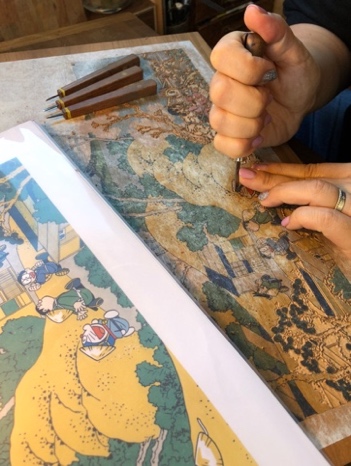
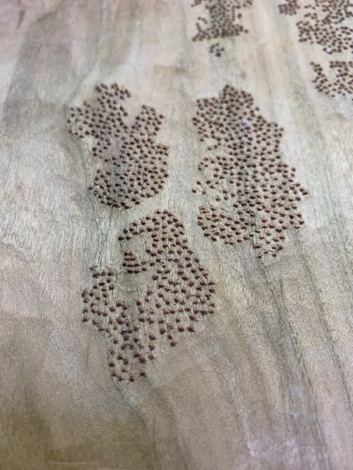
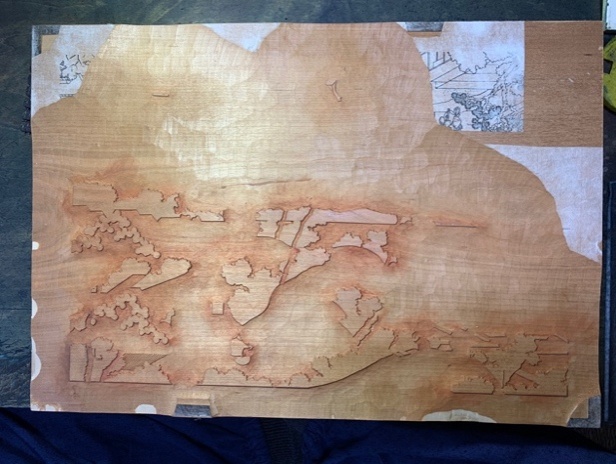
Rubbing by Craftsman
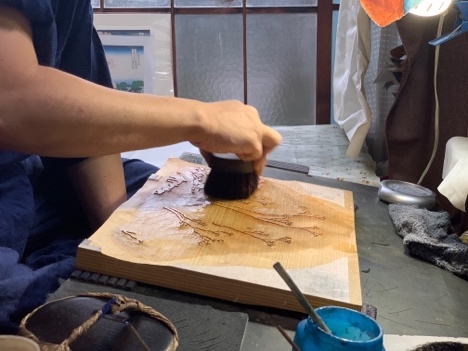
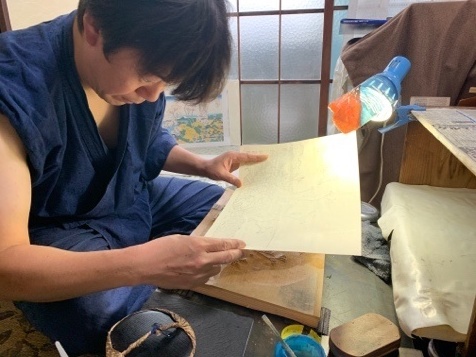
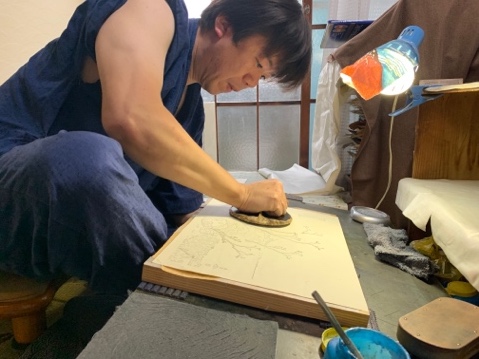
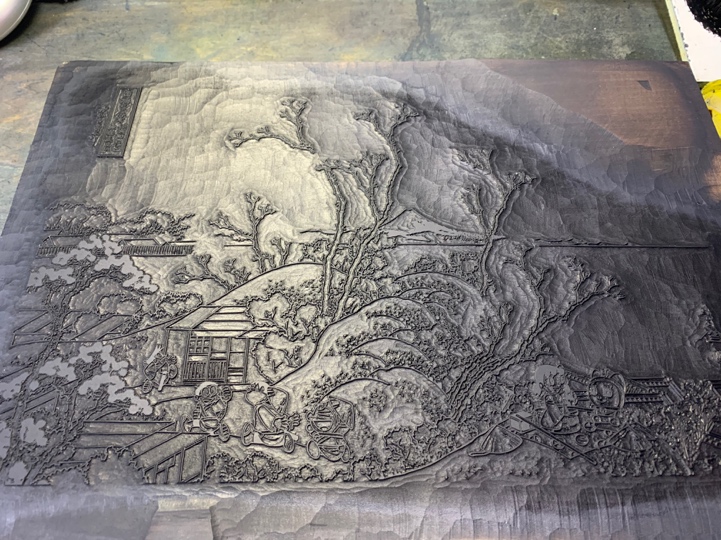
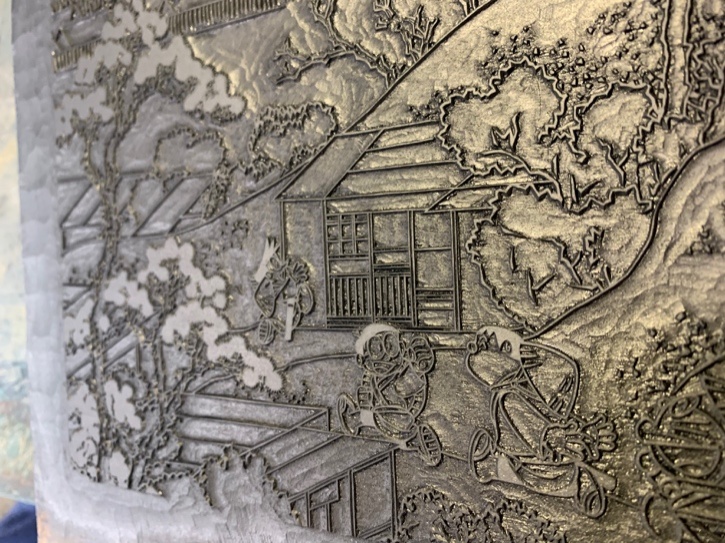
First, a sketch is made, and a monochrome version of the print is carved. After carving a number of woodblocks for each color and using them to rub the painting tirelessly to bring it to life, one single woodblock print is completed. The extremely delicate and advanced techniques these craftsmen utilize have been passed down from the Edo period.
The original painting was created after Hokusai turned 70, and took two years to complete. The painting is said to portray the view of Mount Fuji from Fujimi-cho, Naka-ku, Nagoya City. An eccentric piece for the time, looking closely shows that each and every line and dot was meticulously calculated. Note the vivid indigo sky and the abundance of blue shades that Hokusai loved to use. Doraemon and Nobita are shown having fun as they make barrels, a welcome departure from the more stoic figure in the original painting.
Information
Doraemon Ukiyo-e Woodblock Print: Fujimigahara in Owari Province from the series Thirty-six Views of Mount Fuji
Preorders begin on October 8, 2021, at 12:00
Price: ¥46,000 (Tax and Shipping not Included)
Number of available copies: 300
Echizen-Manufactured Washi Paper Provided by Iwano Ichibei
Online Shop: http://ukiyoework.com/
-
Nagoya Castle “O.SHIRO Collection” Fashion Show Streaming Online
09.October.2021 | FASHION
GQ Japan and ITOCHU Textiles have released a video of The “O.SHIRO” Collection Vol.2 fashion show, highlighting domestic textile production areas around Japan. The video is now available on the special GQ Japan website, as well as the GQ Japan official YouTube channel.
GQ was first published in the United States in 1957 and is now published in 21 countries around the world.
The “O.SHIRO” Collection (o-shiro meaning ‘castle’ in Japanese) is a collaborative collection bringing Japanese textile producers and fashion brands together. The first event was held at Okayama Castle in 2019, with Okayama being an area known for denim production. The second event was held at Nagoya Castle, located in the famed Bishu wool production area. The theme of the most recent showing was ‘ethical consumption,’ a big topic in manufacturing. Three increasingly global brands took center stage: ANREALAGE, beautiful people, and sulvam. Models present include Taiki&Noah, Dori Sakurada, Mila Aina, and Satsuki Nakayama.
A patchwork collection from ANREALAGE using textiles from the Bishu region was released on October 4. On October 7, a collection from beautiful people will include textiles from Wakayama, while on October 14, sulvam will release a collection made from Okayama and Hiroshima denim. Certain pieces from The “O.SHIRO” Collection will be on display on the 3rd floor of Shibuya PARCO.
『GQ JAPAN』Illustration by Koji Toyama (C) 2021 Conde Nast Japan. All rights reserved.
Information
The “O.SHIRO” Collection
When: October 20 – October 24, 2021, from 11:00-20:00
*Hours are the same as Shibuya PARCO.
Address: Shibuya PARCO 3F (15-1 Udagawa-cho, Shibuya-ku, Tokyo)
Official Site: https://www.gqjapan.jp/_special/toc/2021/
-
Exhibition Featuring Famed Silk Fabrics from Tsuruoka in Yamagata Prefecture Now Open
Tsuruoka, Yamagata prefecture is known throughout Japan and the world for its silk production. Beginning on September 18, a new exhibition is inviting guests to see some of the incredibly beautiful fabrics to come out of the area, particularly highlighting Reiko Sudo, an innovative cloth-maker living in the area. These stunning pieces are being displayed at the Matsugaoka Reclamation Site, celebrating 150 years of history in 2021 and known as the birthplace of Tsuruoka silk. In particular, Sudo’s own Kibiso fabrics, created with the intent of blending long-held traditions with modern technologies, will be making an appearance! Kibiso refers to the first silk that comes off the cocoons in industrial silk spinning.
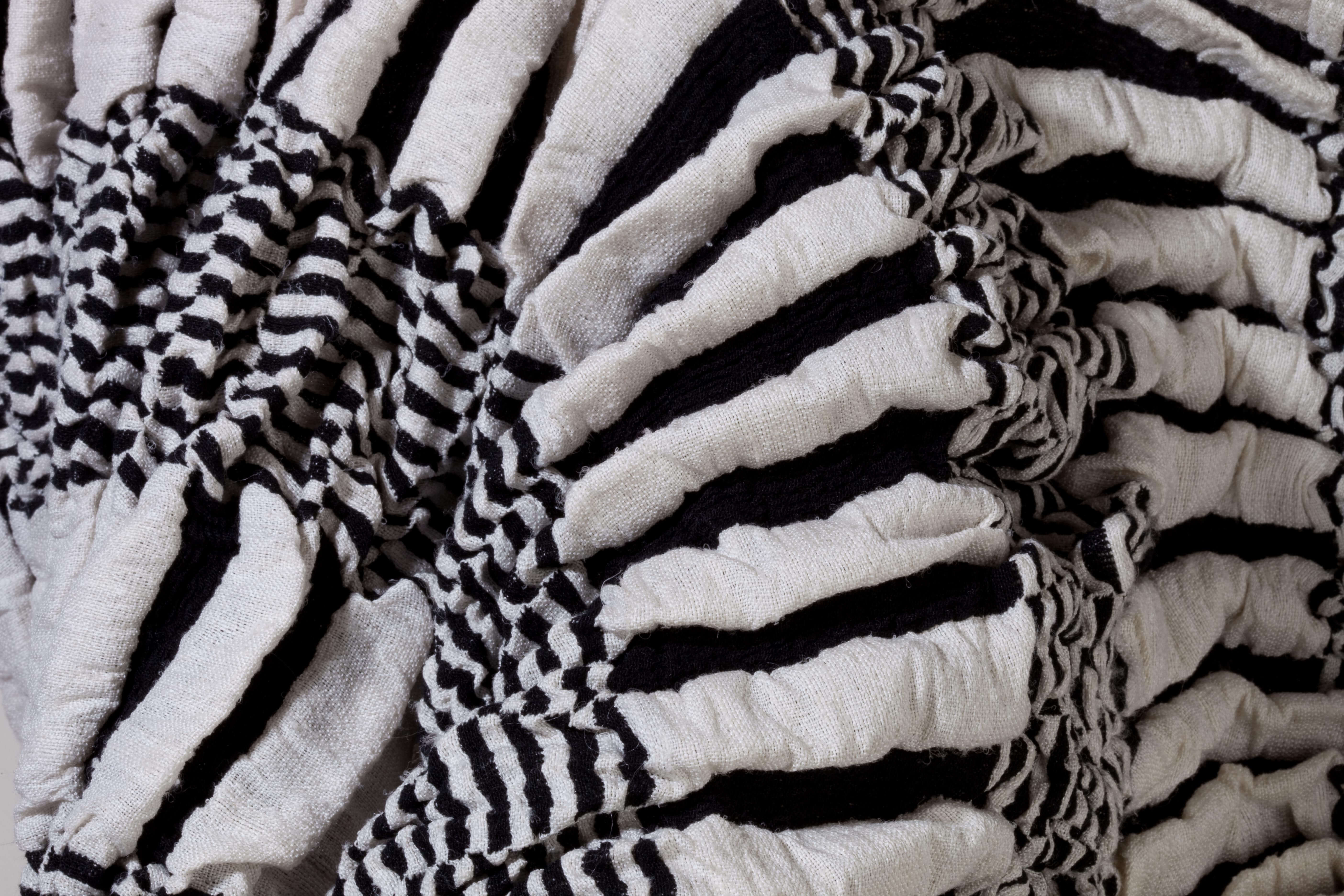
Kibiso Stripes & Streaks: 2018 Photo Sue McNab

Kibiso Zori: Photo Keiko Matsubara
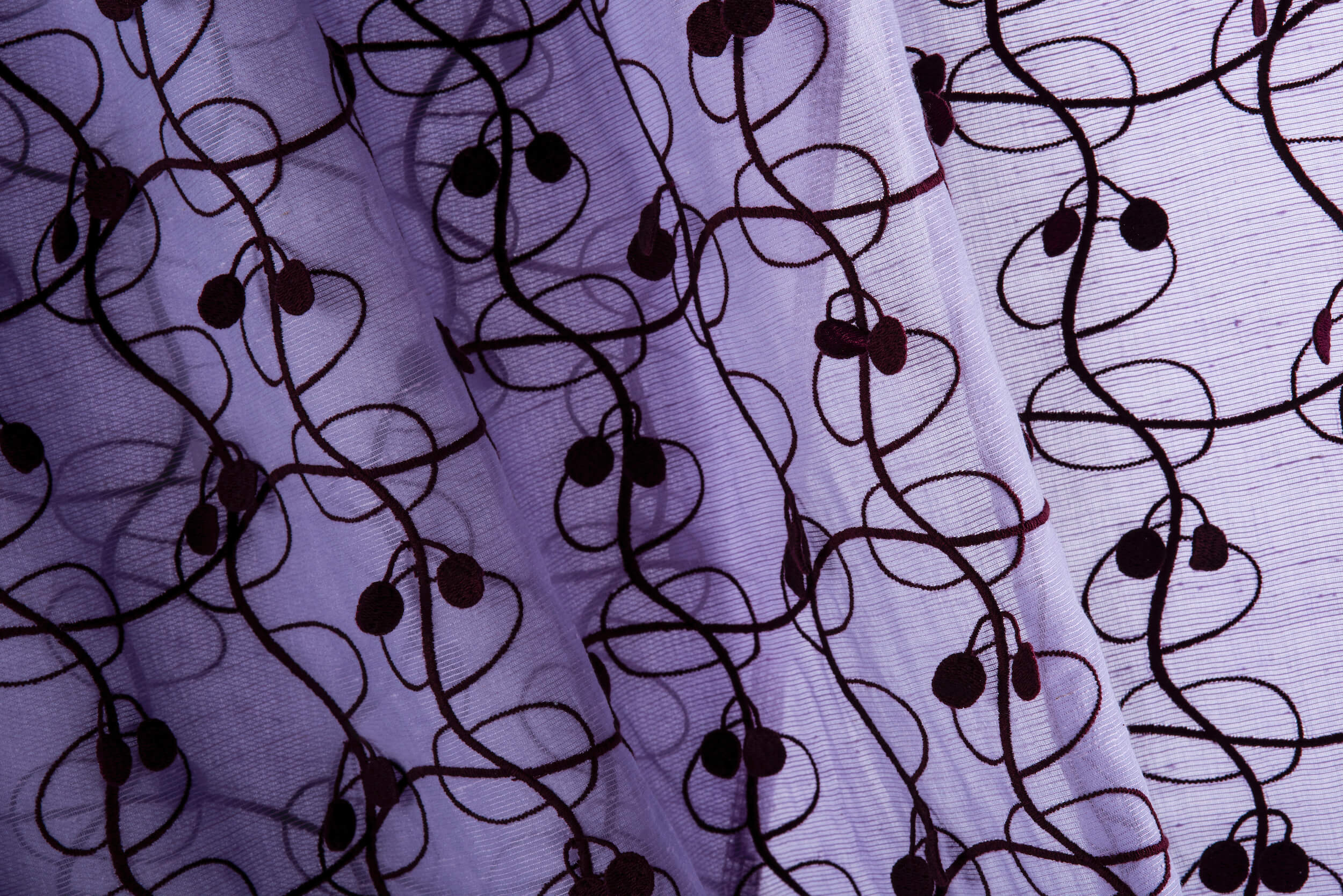
Swinging Cherries: 2021 Photo Keiko Matsubara
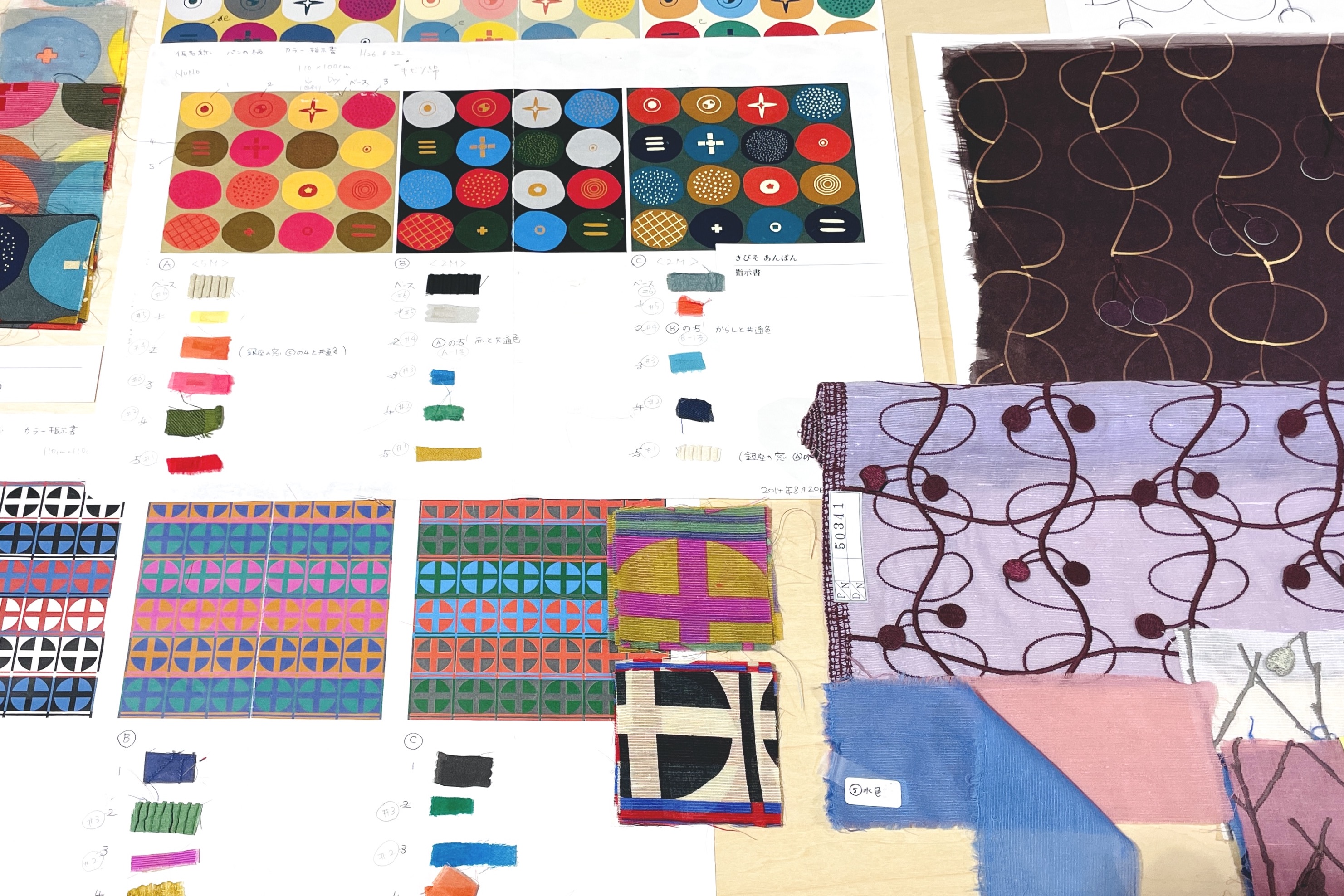
An exhibit featuring the production process, original design sketches, and prototypes
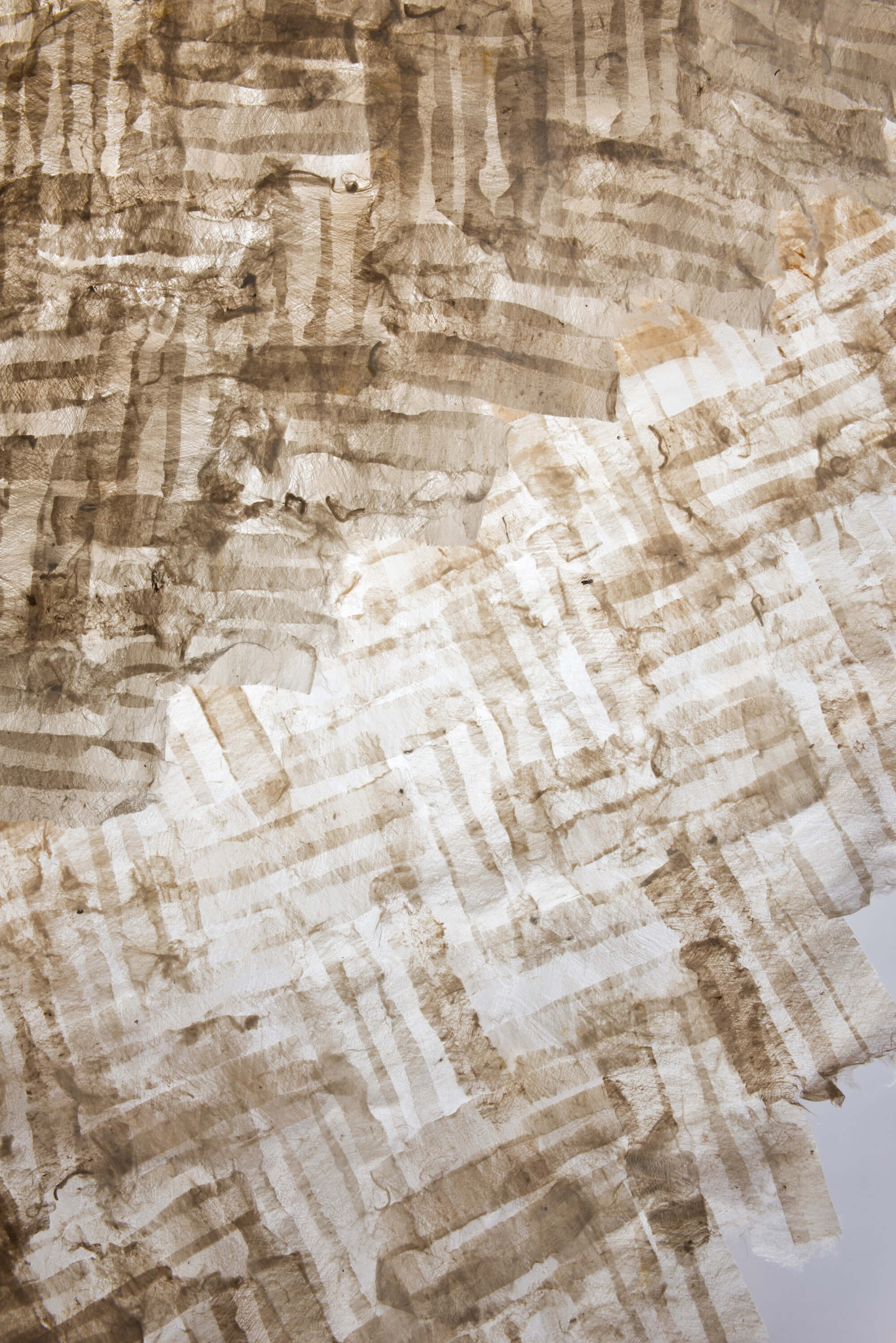
Kibiso – Ogarami Choshi Sheets: 2018 Photo Keiko Matsubara

Ogarami Choshi, the byproduct of the silk mill: Photo Keiko Matsubara

The First Cultivation of the Matsugaoka Reclamation Site
Tsuruoka City is the only region in Japan where the entire silk-making process–from caring for silkworms to dying and wearing–is completed in a single place. Silk production began in 1872 when the former Shonai clam’s samurai warriors began cultivating new lands around the Matsugaoka area. During the Meiji period, a local inventor named Saito Toichi invented the automatic weaving machine, making the production of silk fabrics much quicker and easier. The new fabrics were exported around the country to be used in dresses, and silk production quickly became the area’s main industry.
Kibiso, a type of thread made from the first silk discharged from a silkworm, has been in production since 2007 and is breathing new life into the area’s industry. The thread is hard and thick, making it very difficult to work with–but once these works are completed, the textile is extremely durable. It holds moisture well, has antibacterial properties, and will help protect the wearer from UV rays. Combining new designs with functionality, Kibiso also cuts down on waste, and museums in the United States and the United Kingdom currently have some of these creations on display, with more requesting installations.
At the current exhibition, 29 unique textiles, mainly Kibiso, are hung from the ceiling. Visitors are allowed to touch each of these pieces, and can also view the entire creative process from sketches and prototypes to the final product. All pieces were created together with the members of NUNO, a textile design studio directed by Sudo. The designs were decided on through conversations with craftsmen throughout Japan. By reviewing traditional processes and helping them evolve to suit modern needs, Kibiso was born and is helping to revitalize the silk industry in Tsuruoka.
A highlight of the exhibition is ogarami choshi, a byproduct of silk production often caught in the thin metal tubes of silk mills. These can be torn into sheets and used for new creations, and by doing so, helps reduce waste.
Information
Circular Design -Kibiso Continues-
Running: September 18 – October 17, 2021 (Planned to be extended until the end of 2021)
Hours: 9:00-16:00 (Closed on Wednesdays)
Address: Matsugaoka Reclamation Site, Silkwork-Raising Room 2F (29 Haguromachi Matsugaoka, Tsuruoka, Yamagata)

